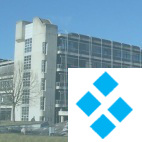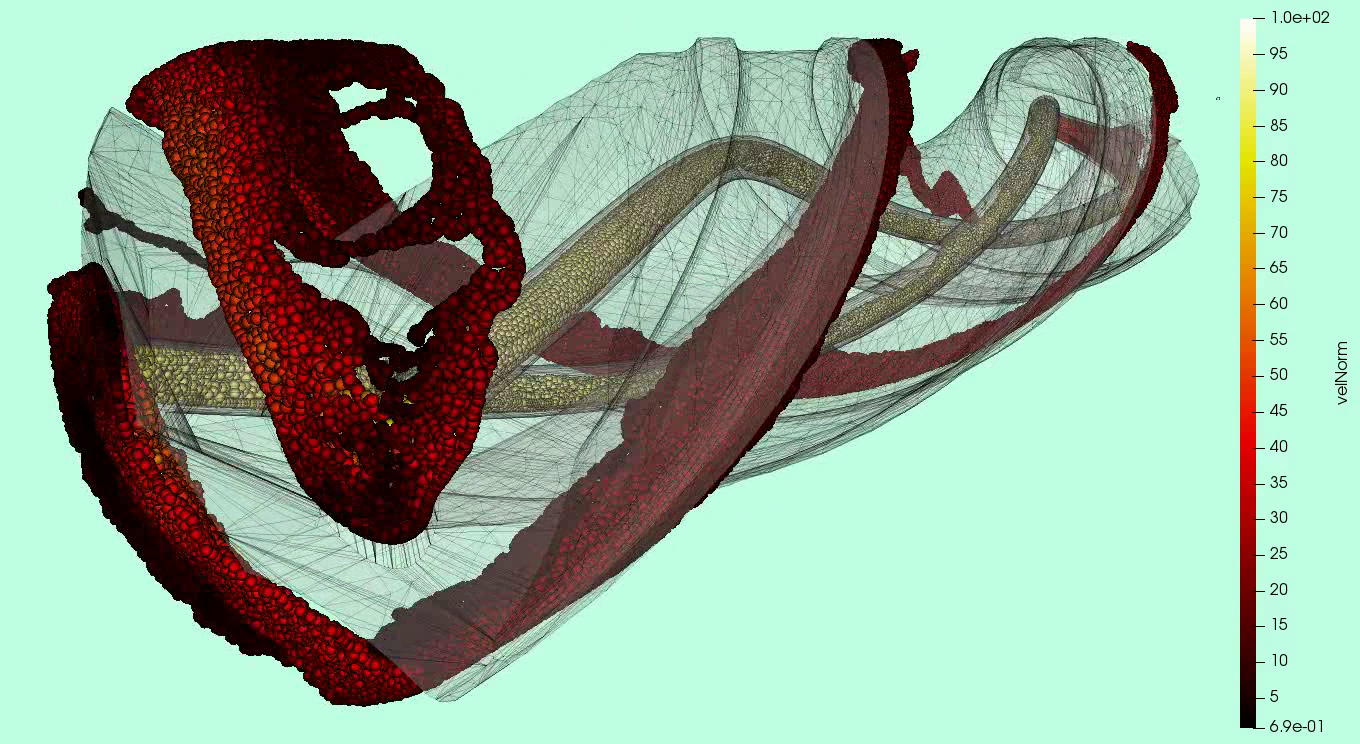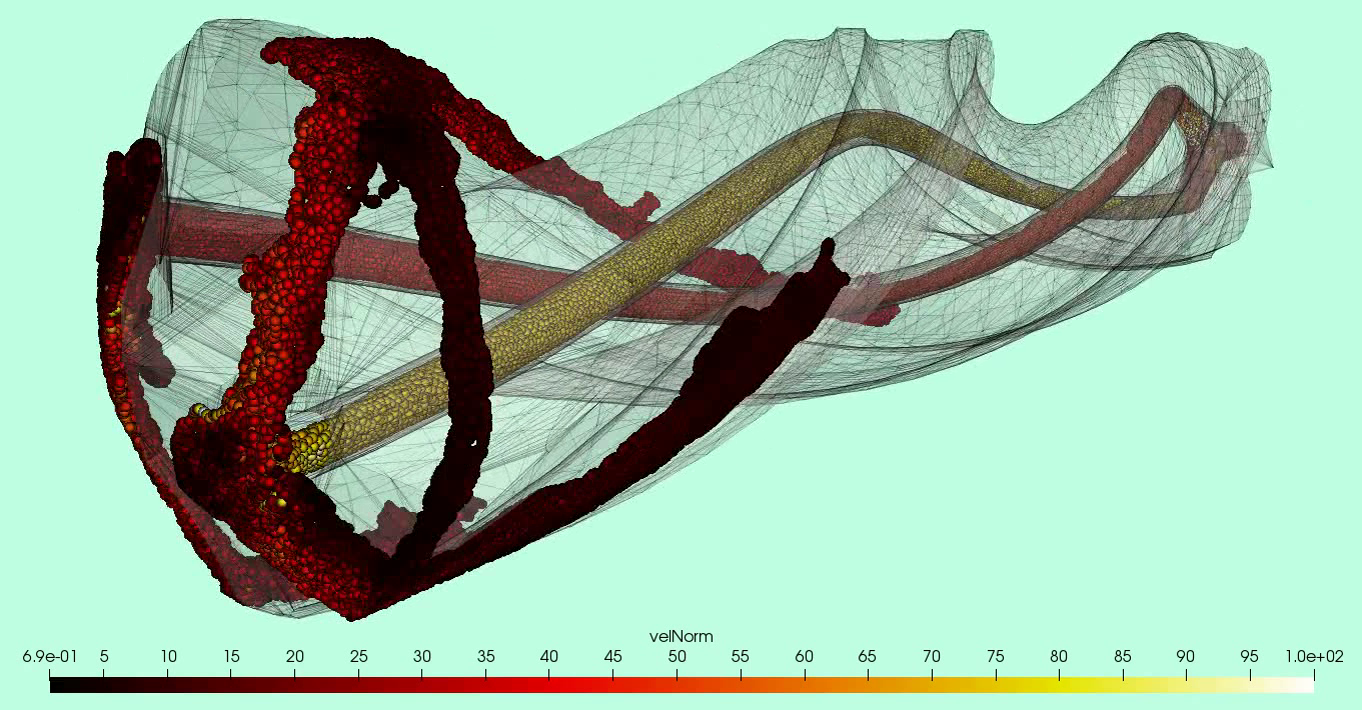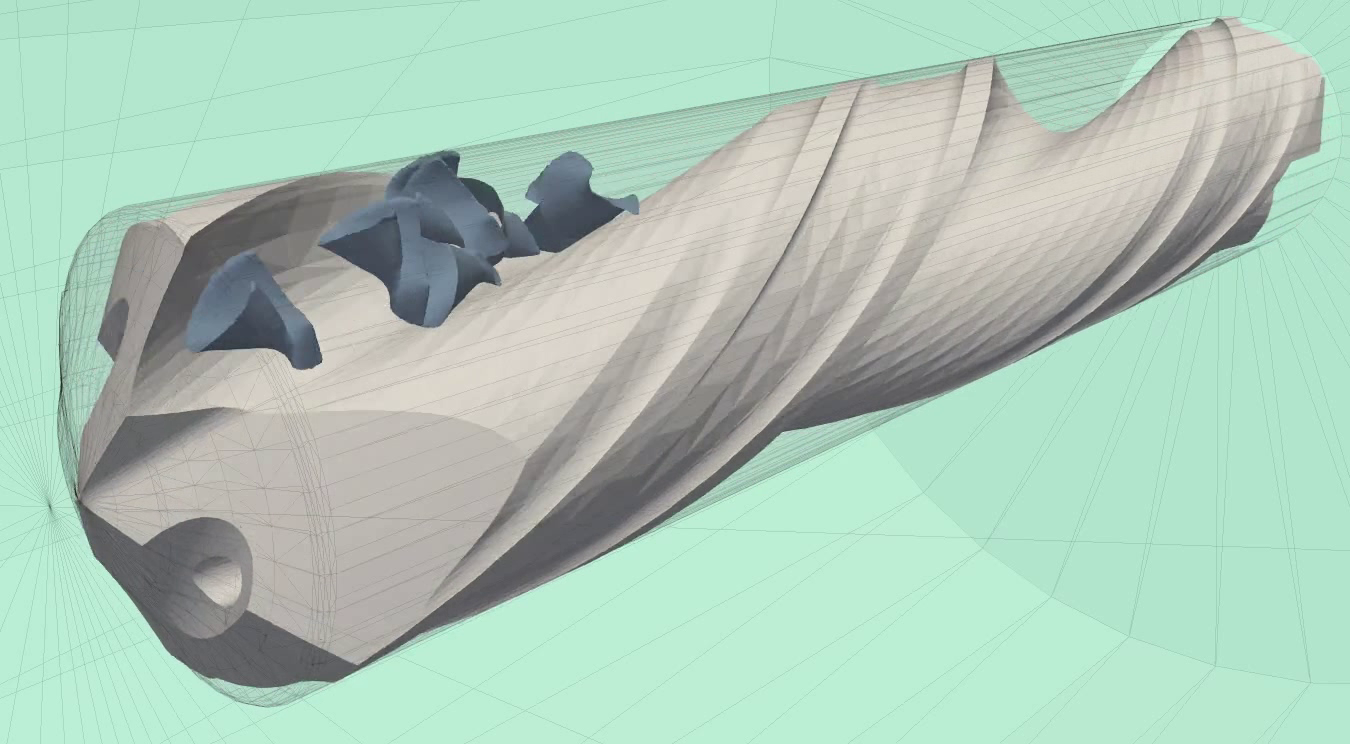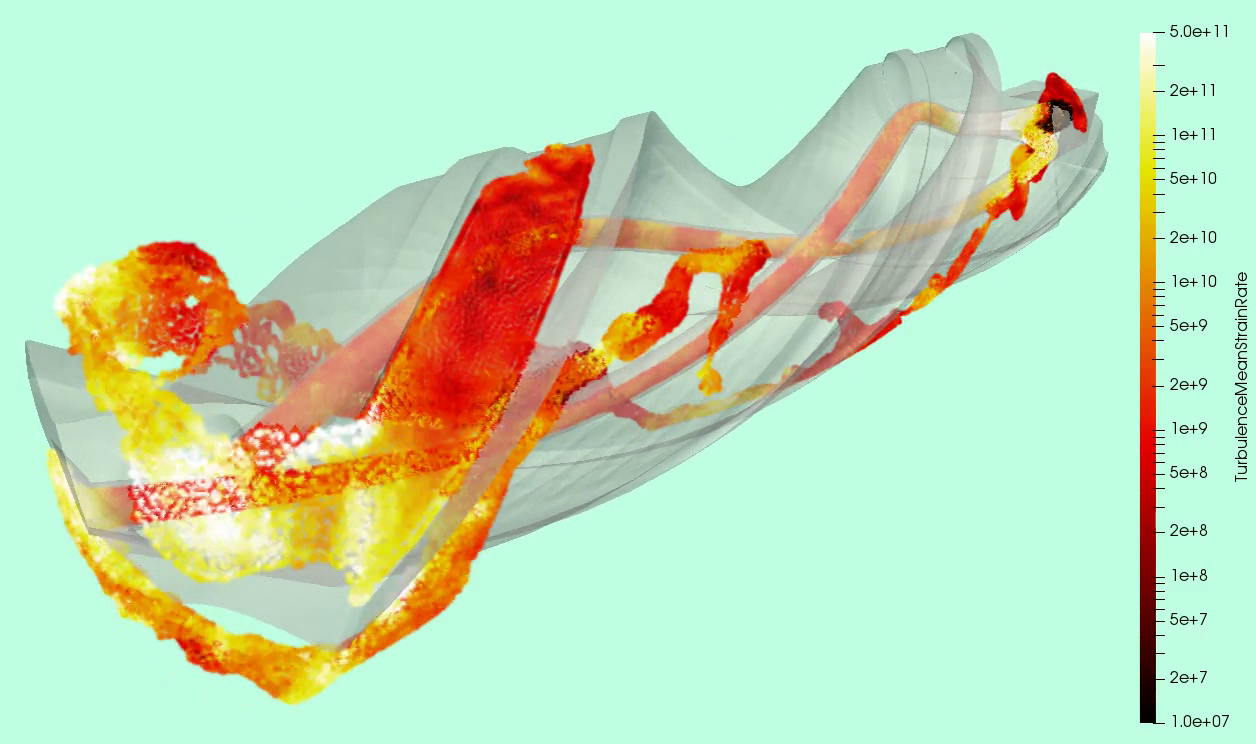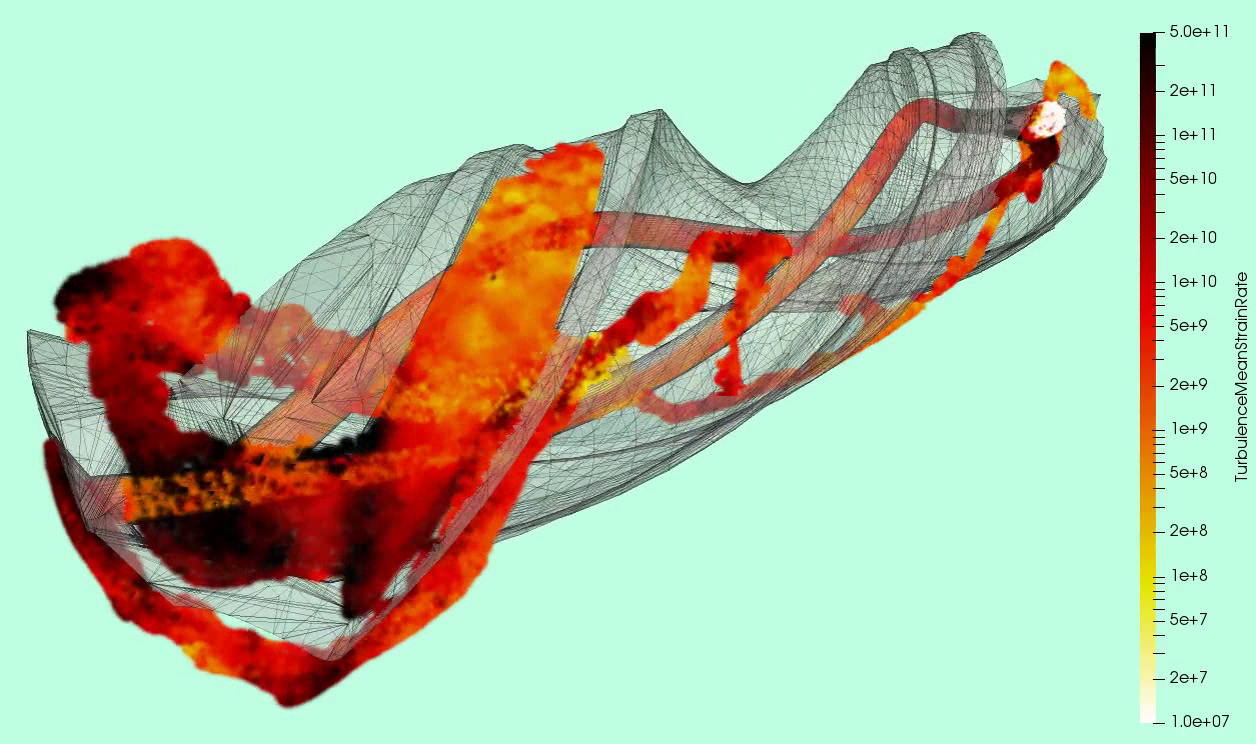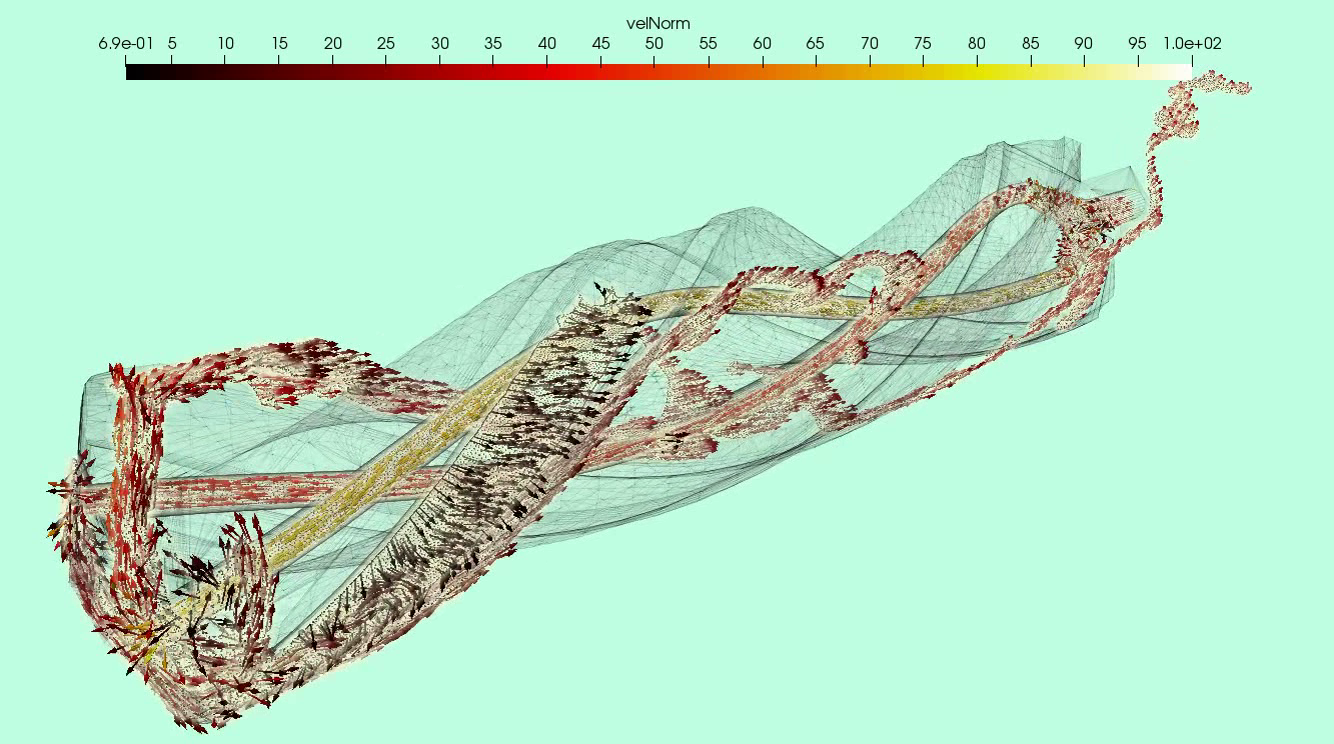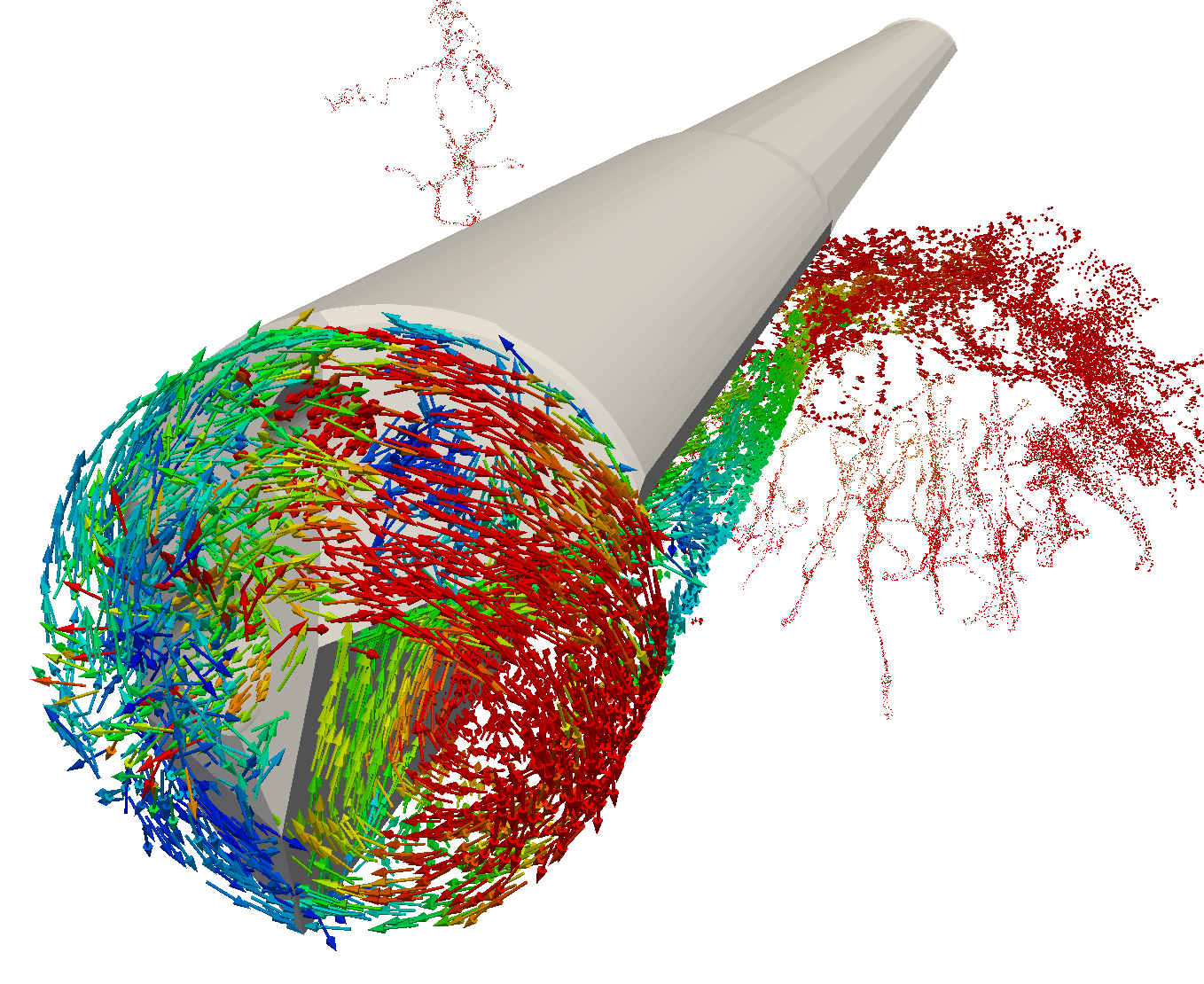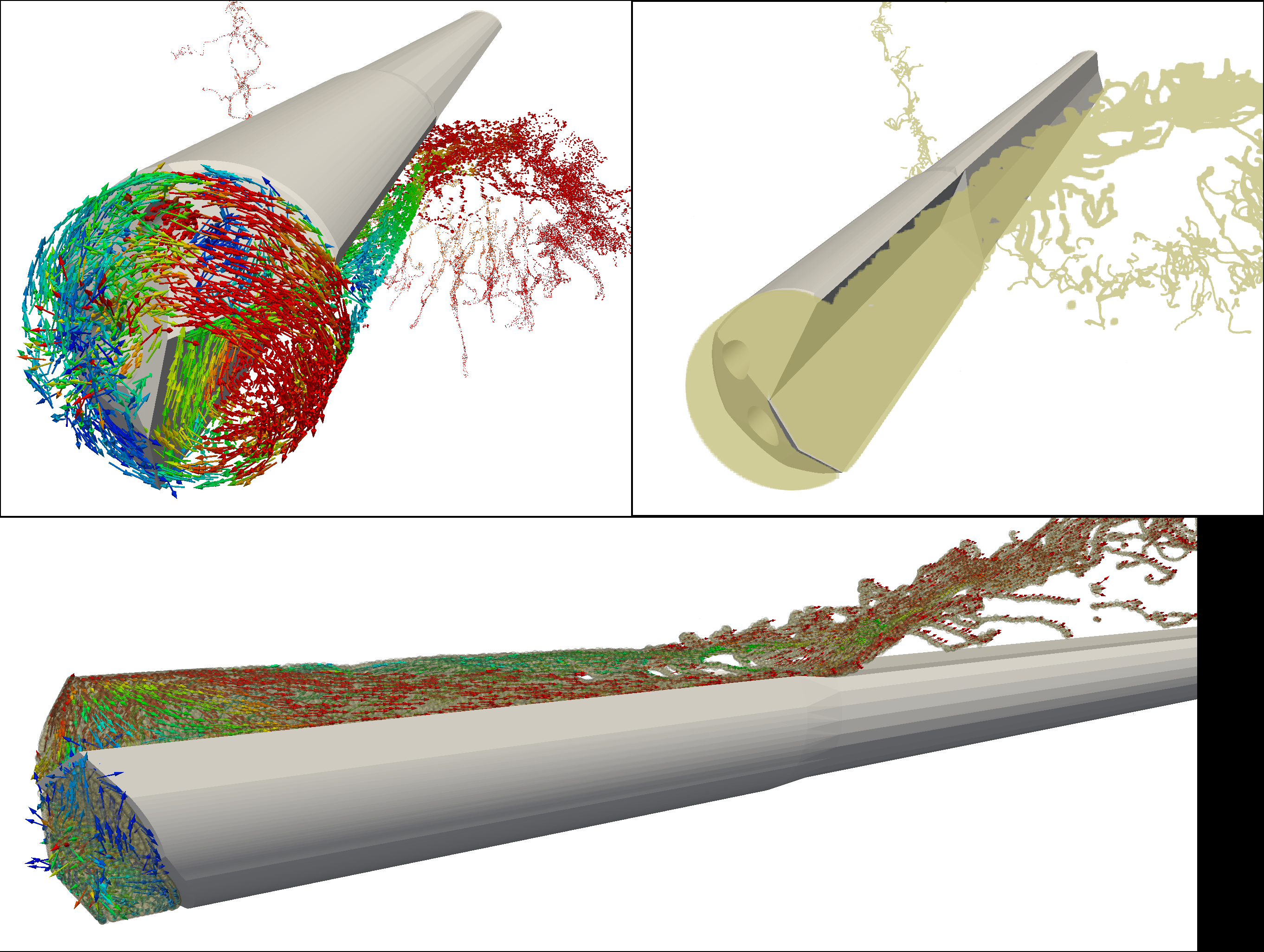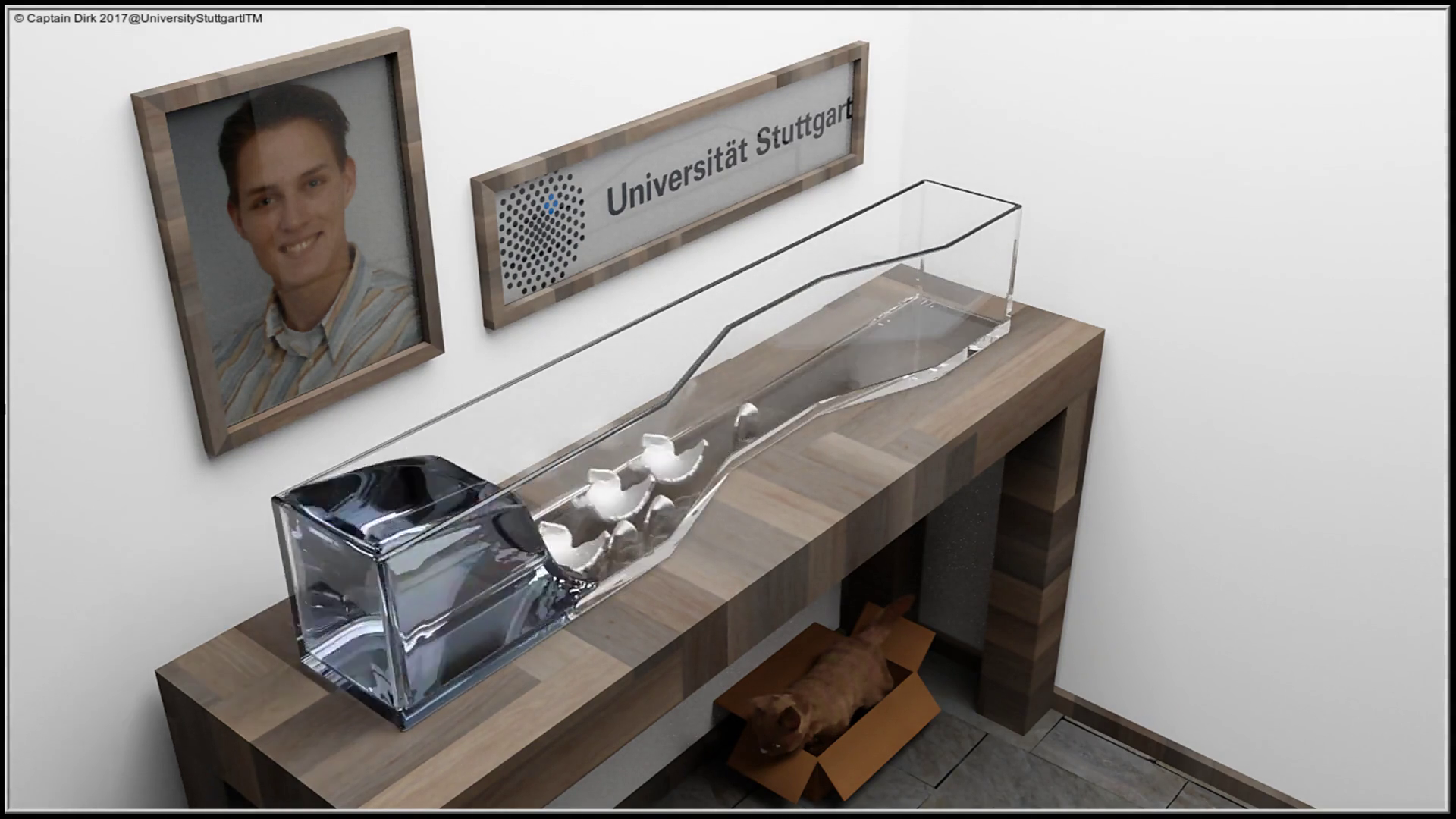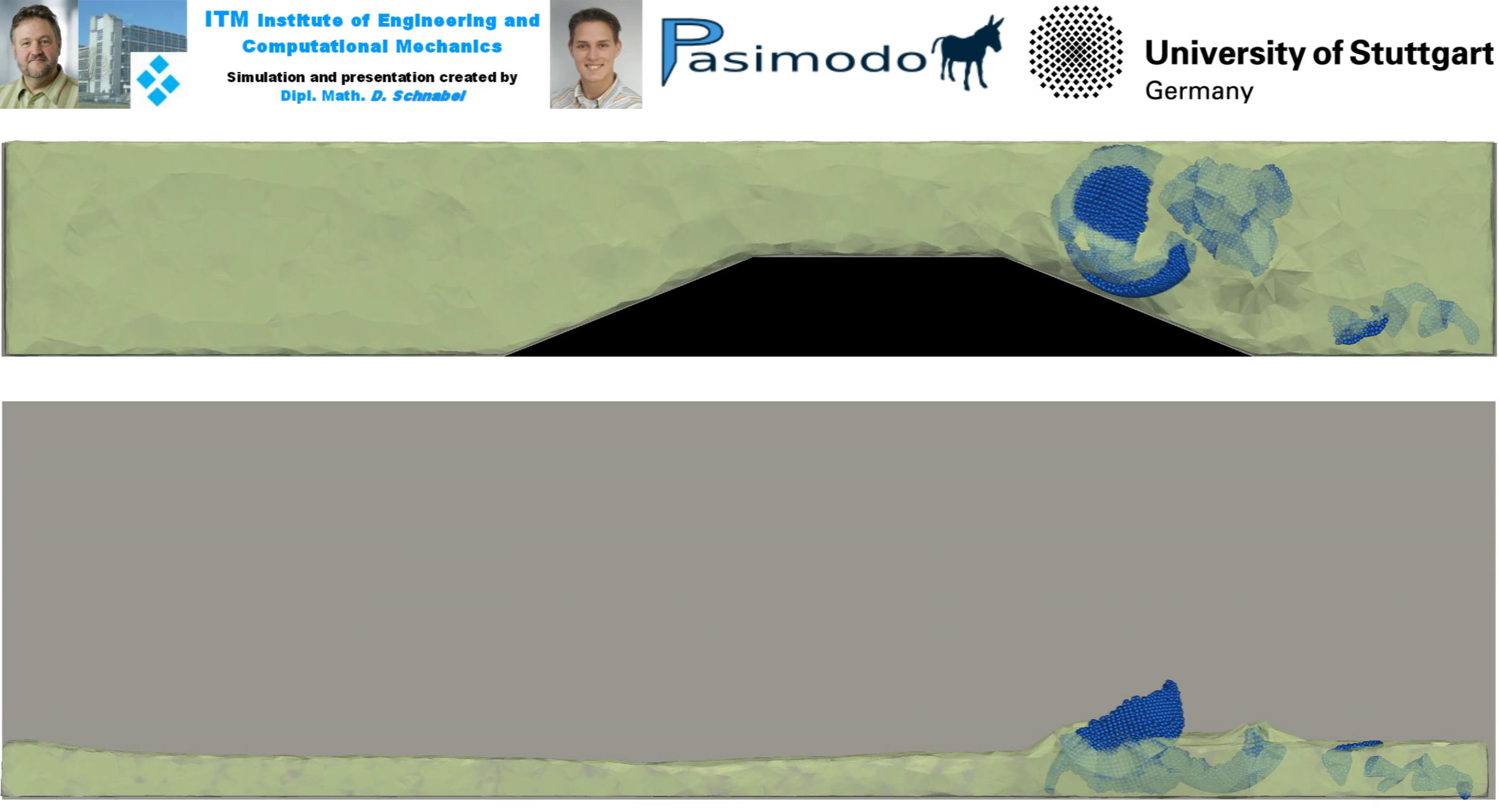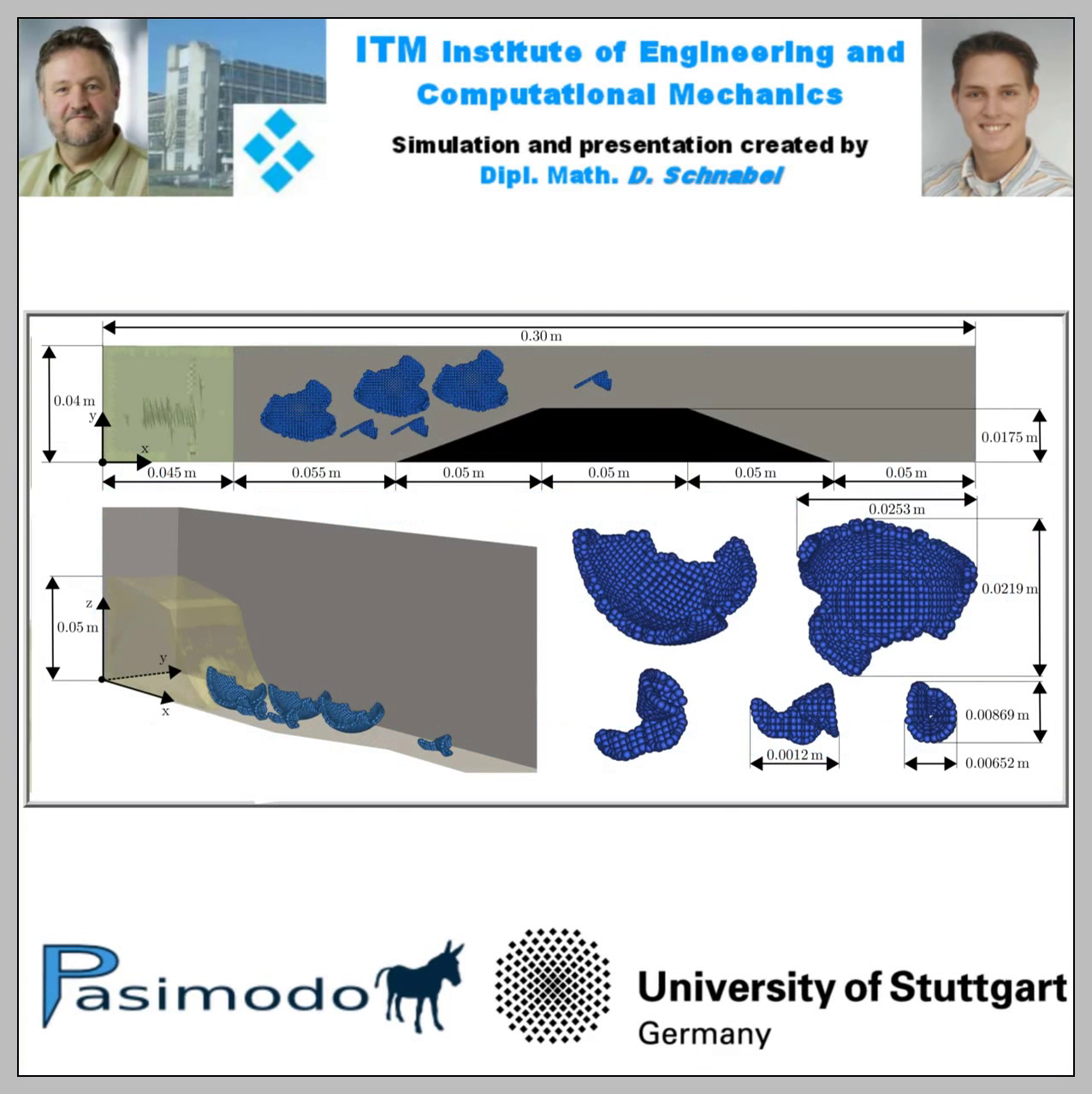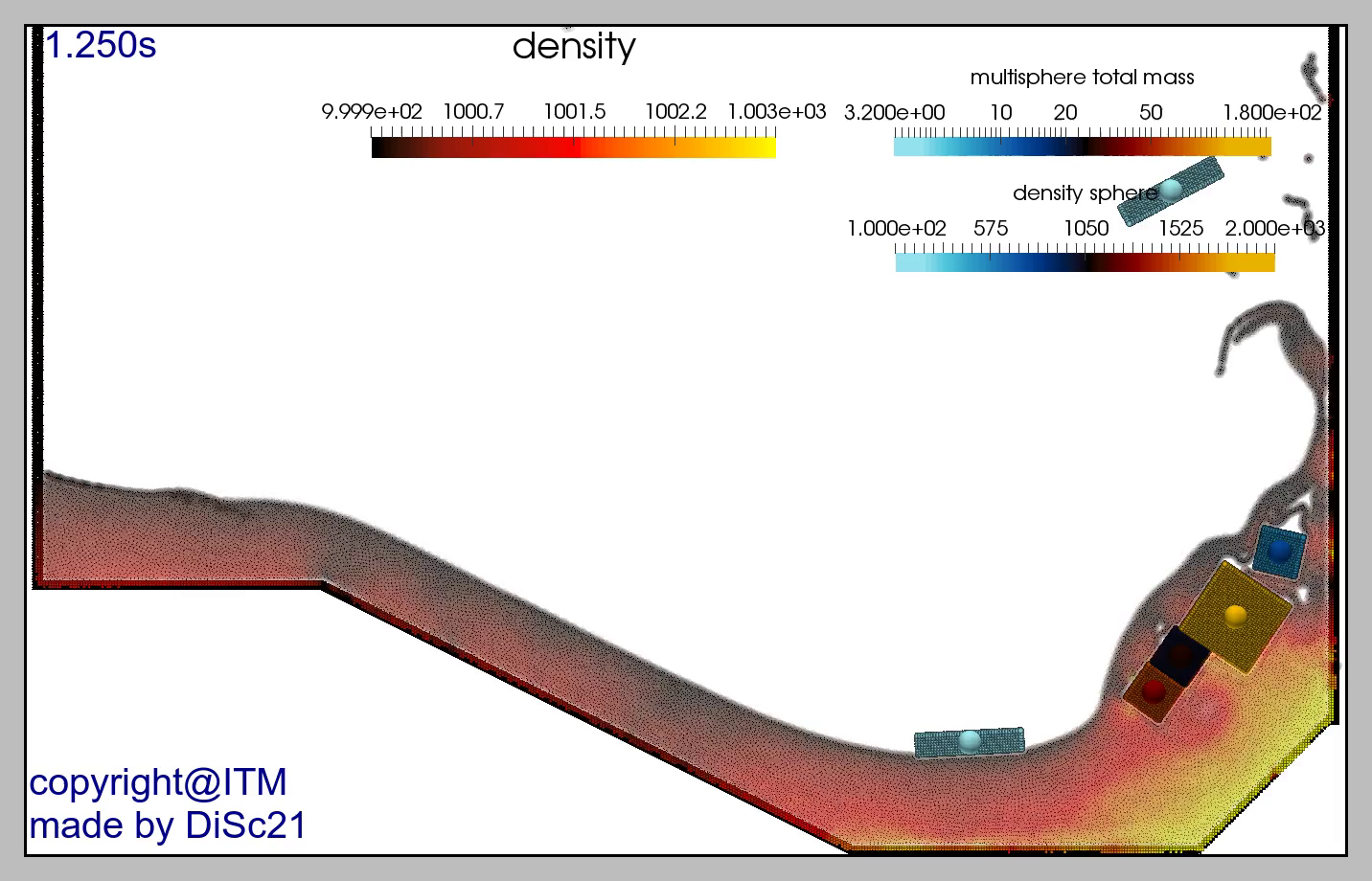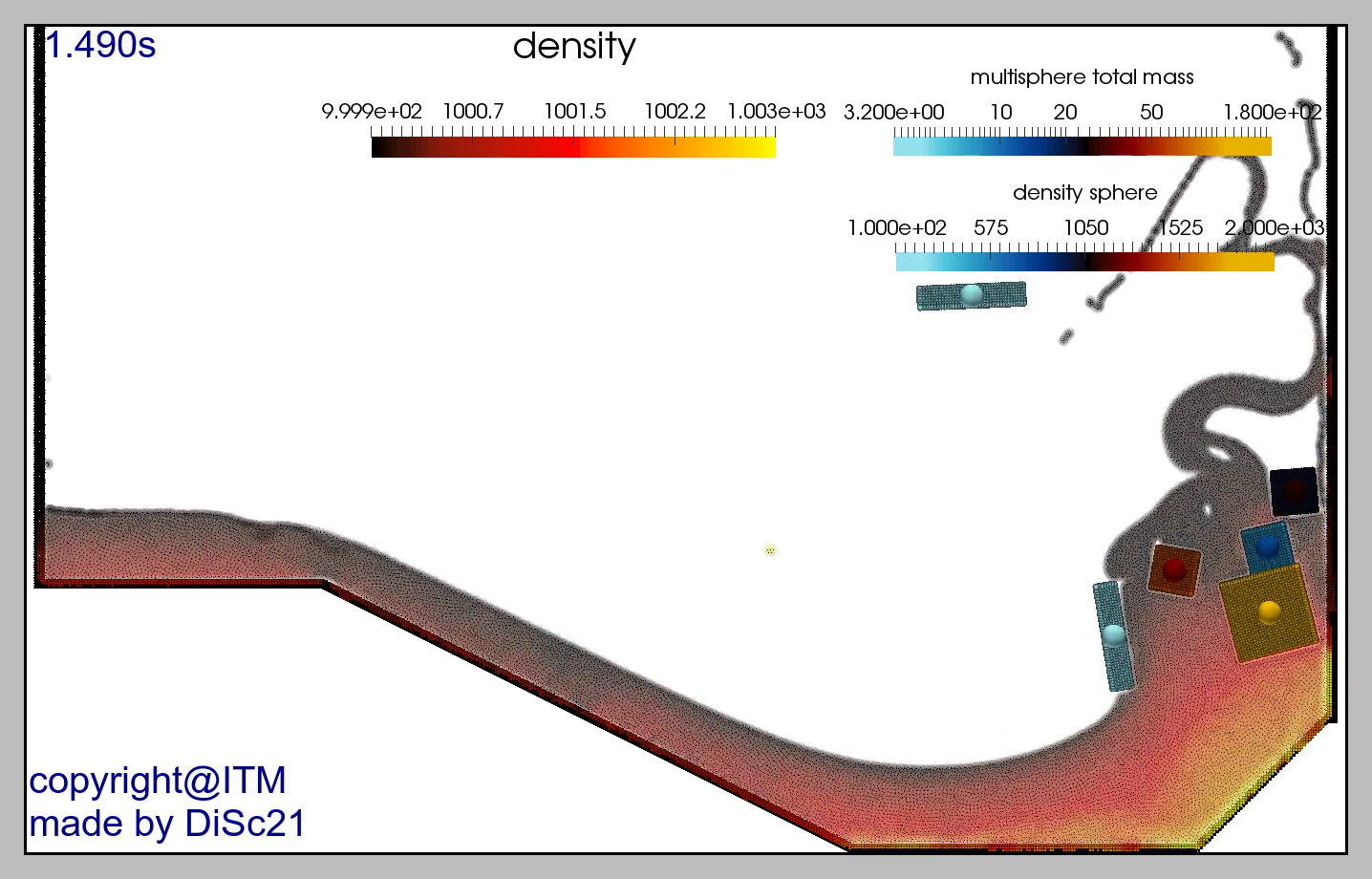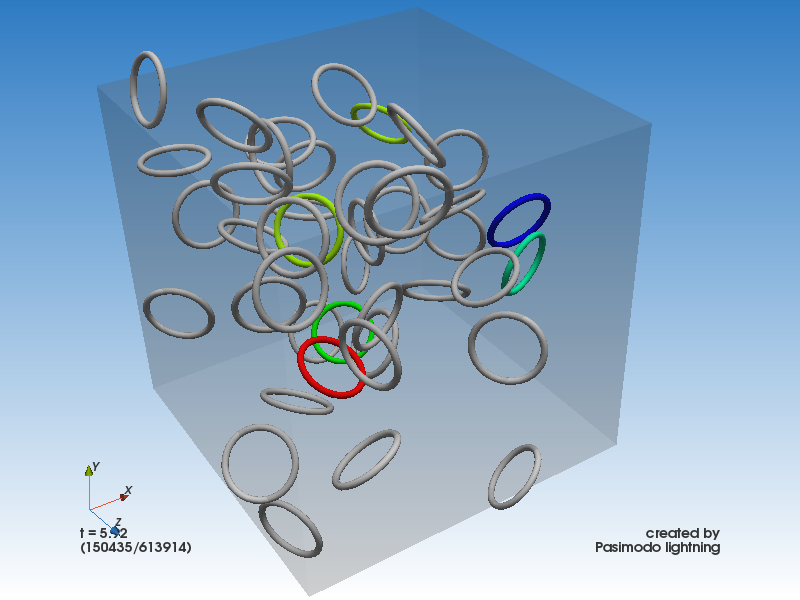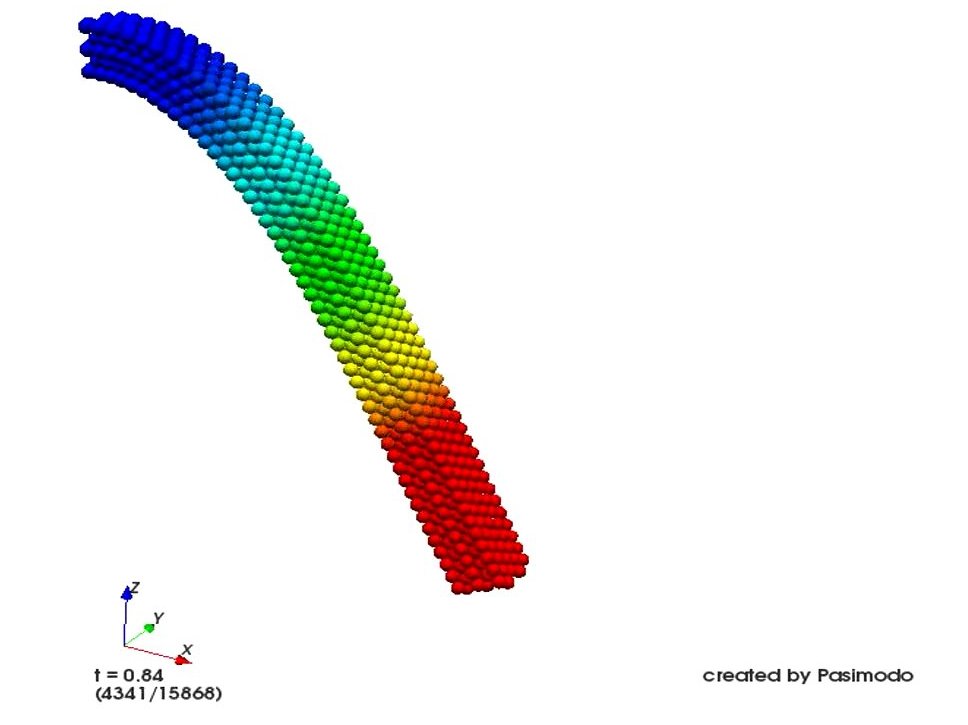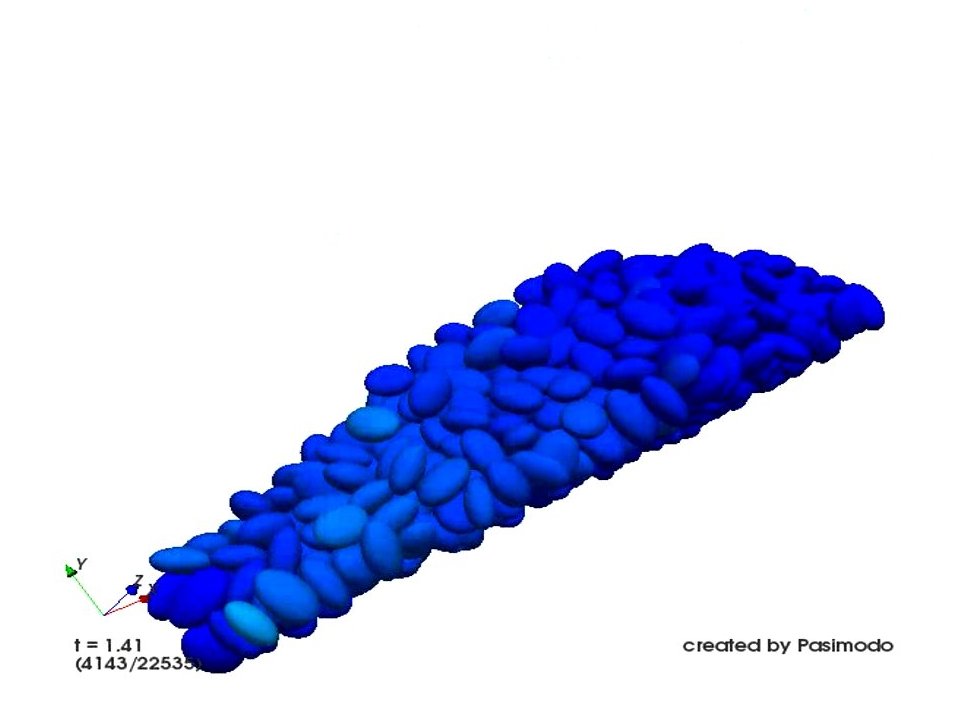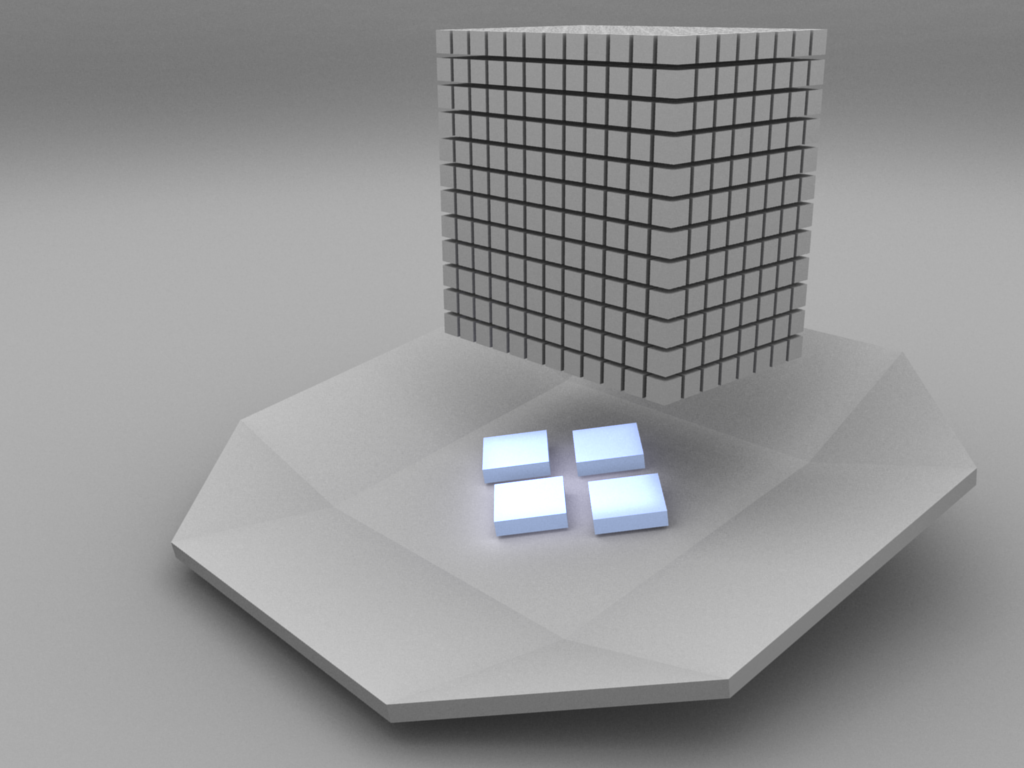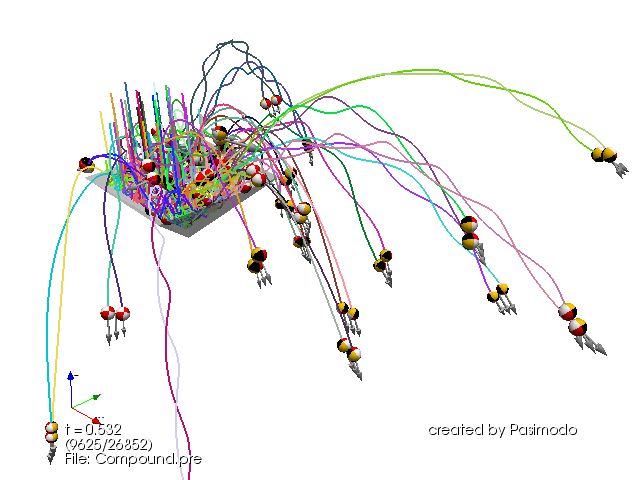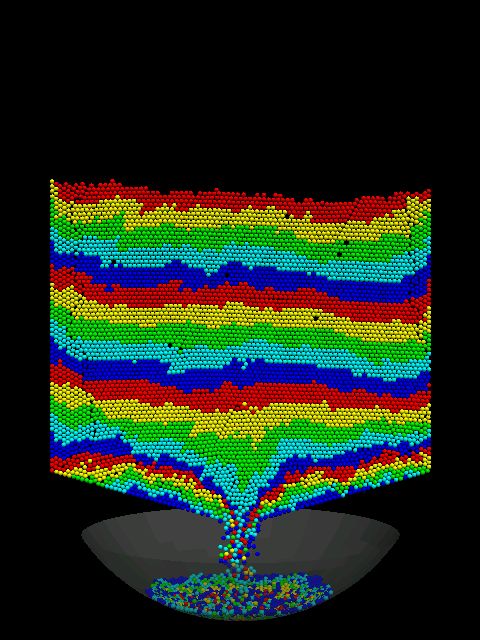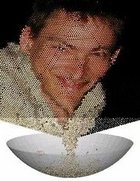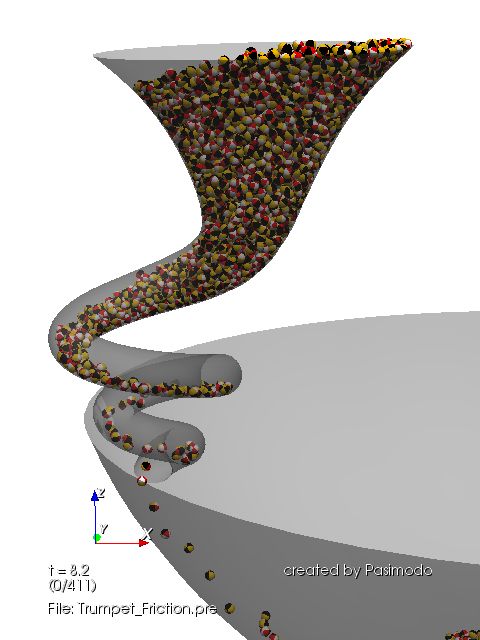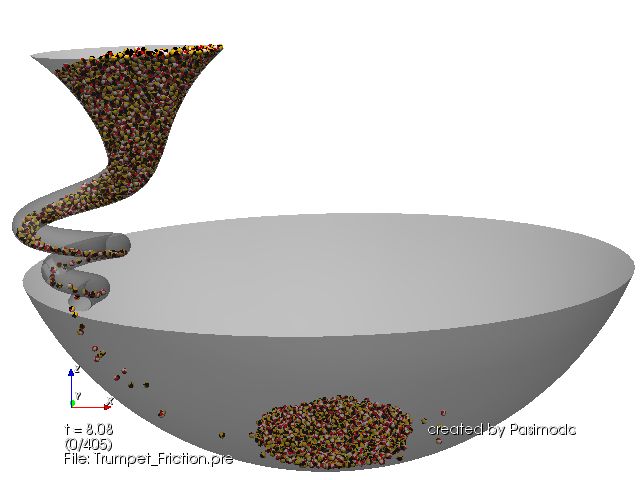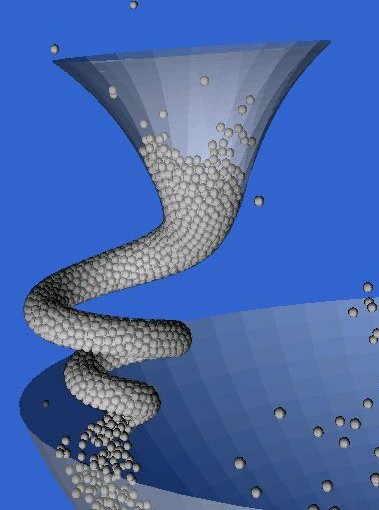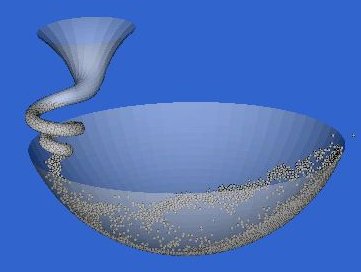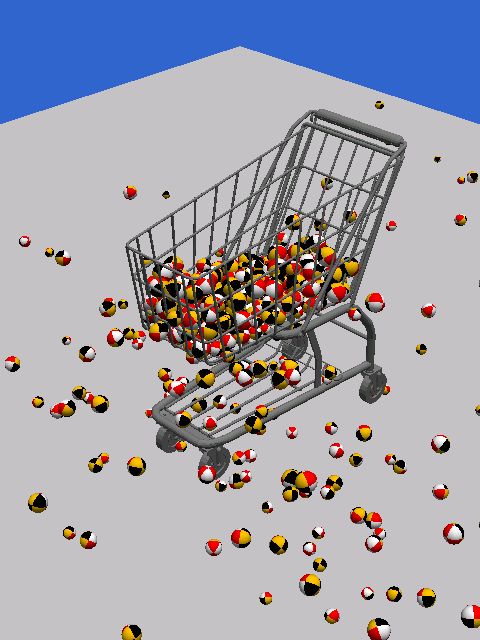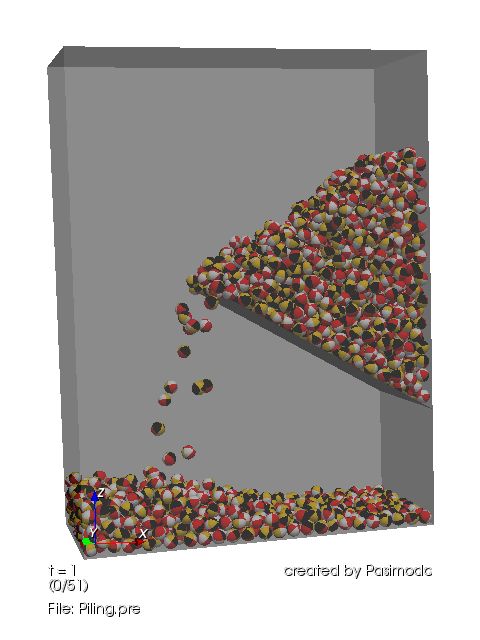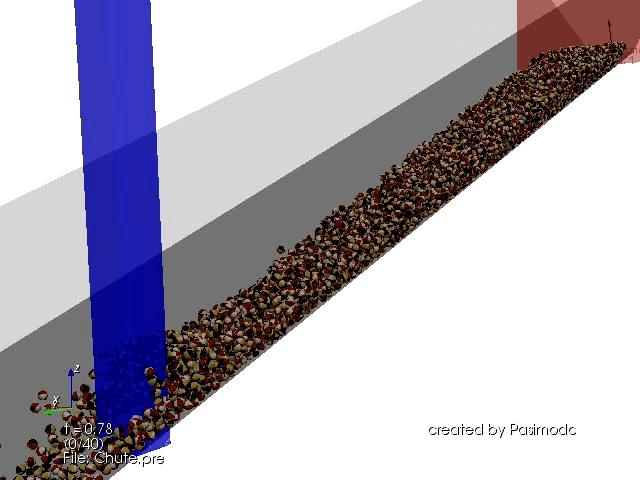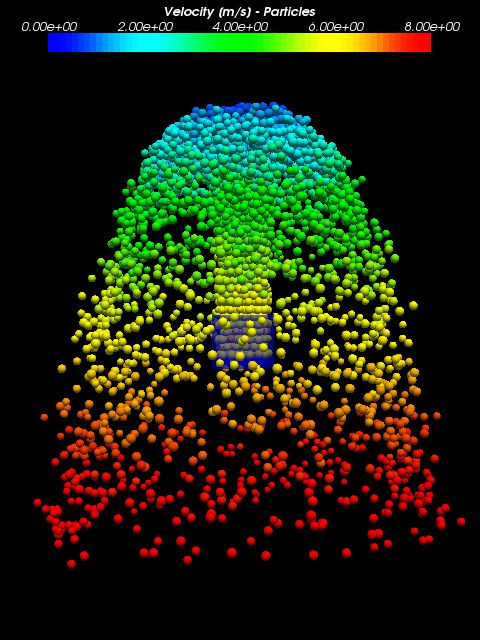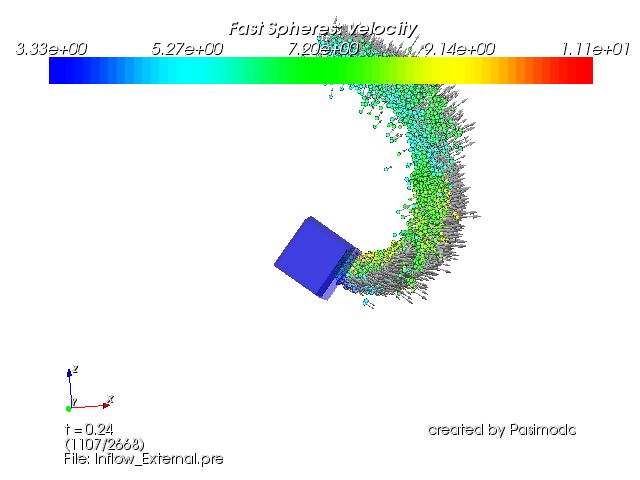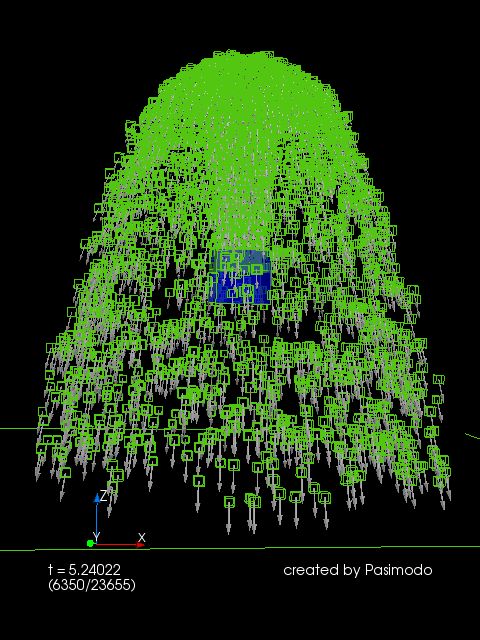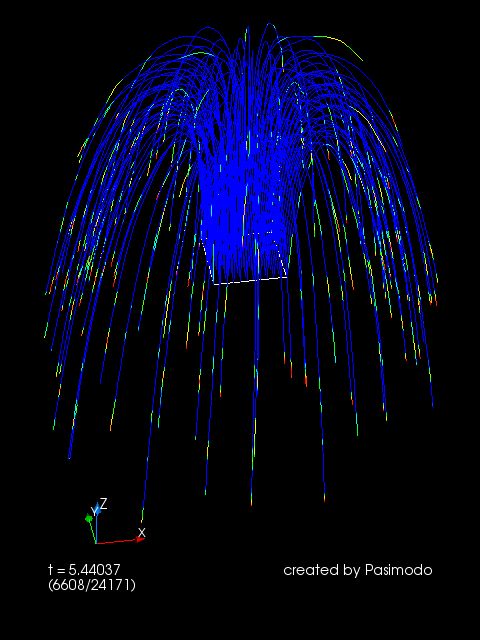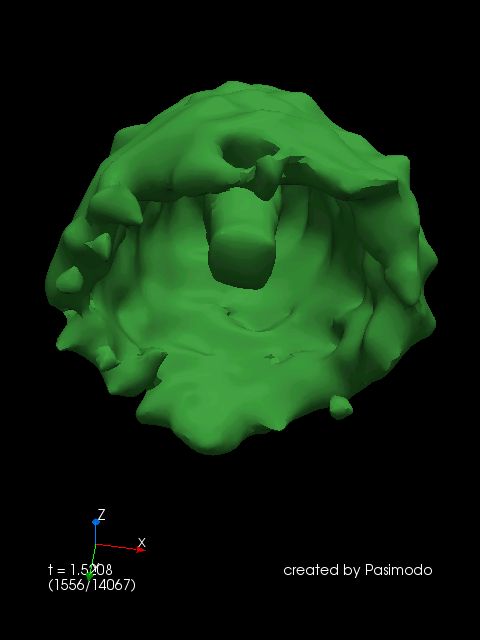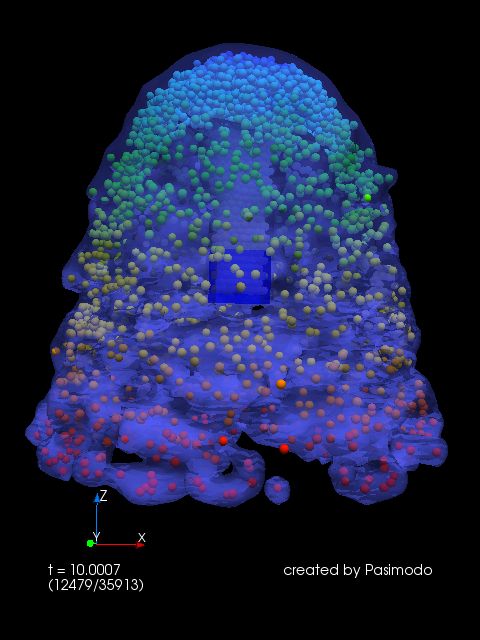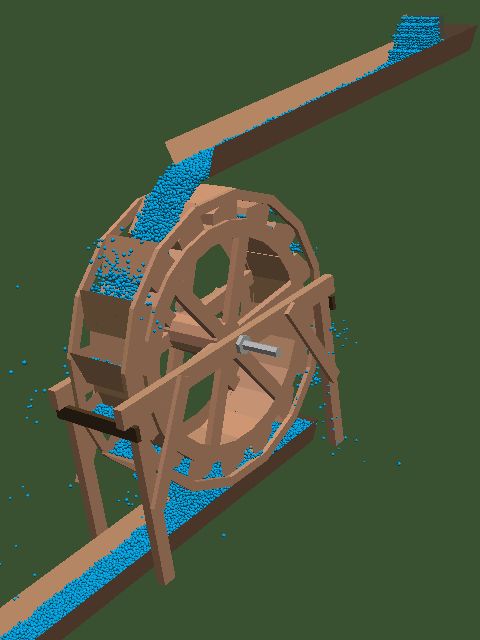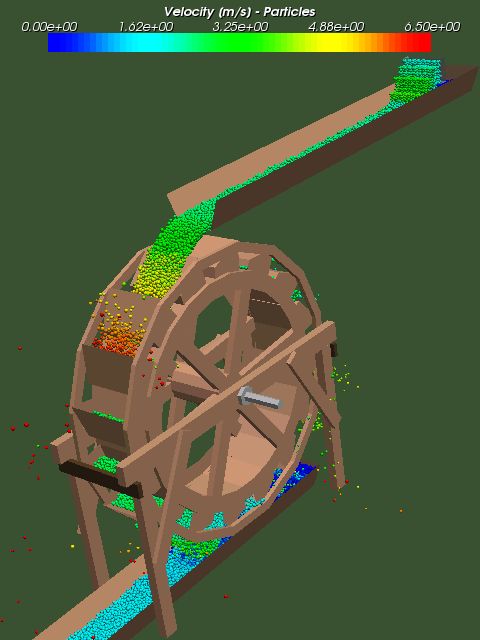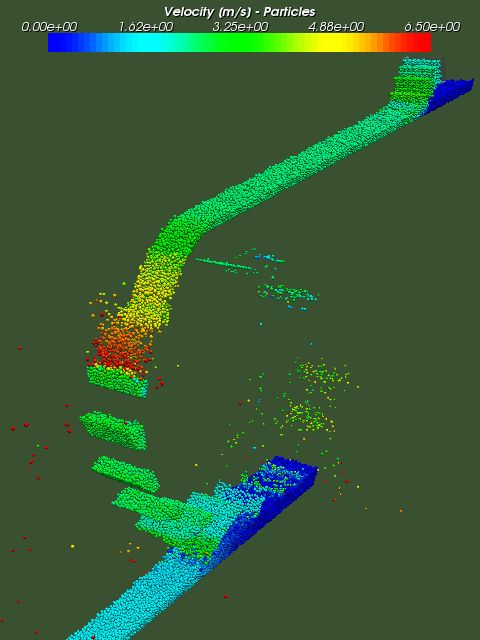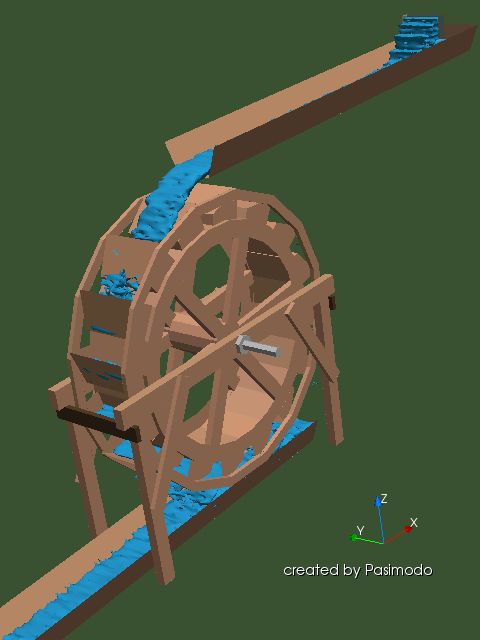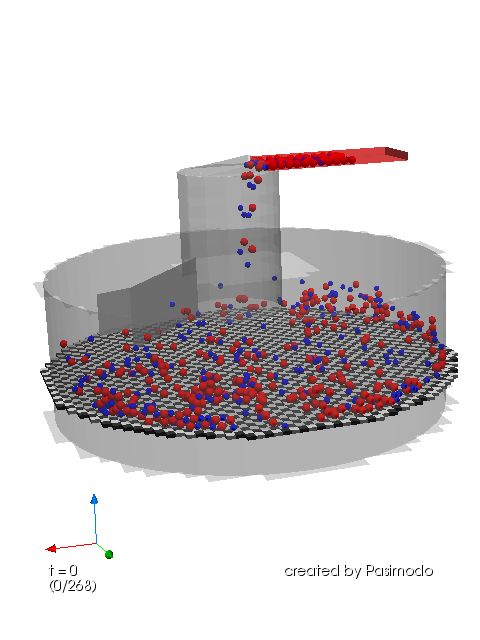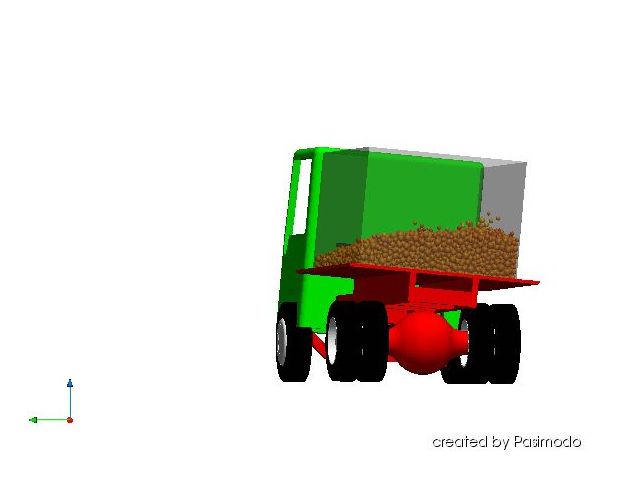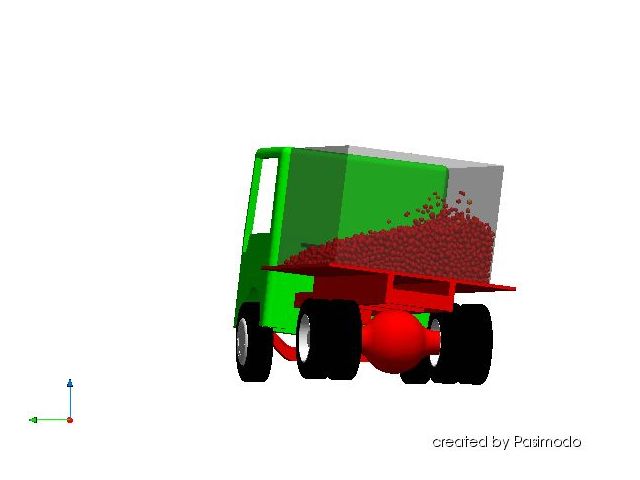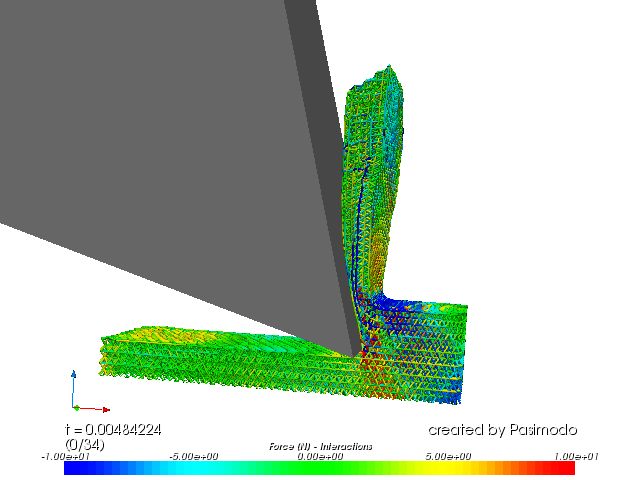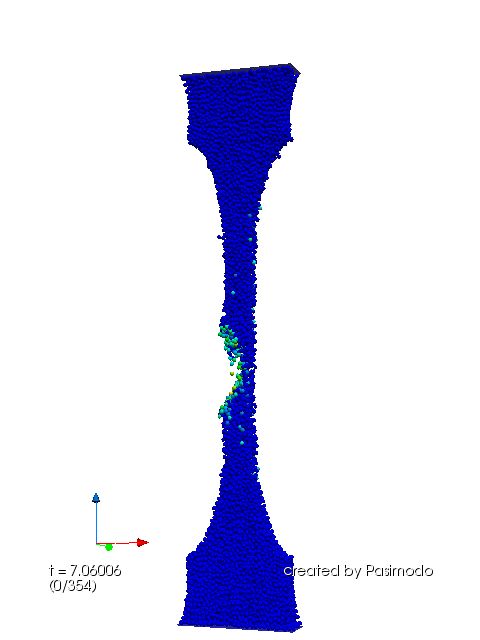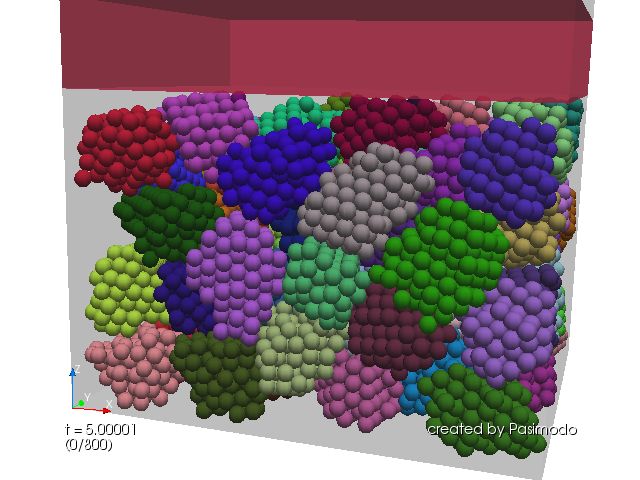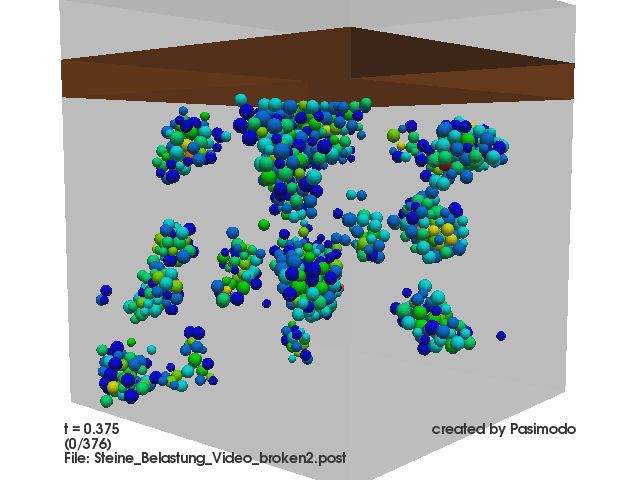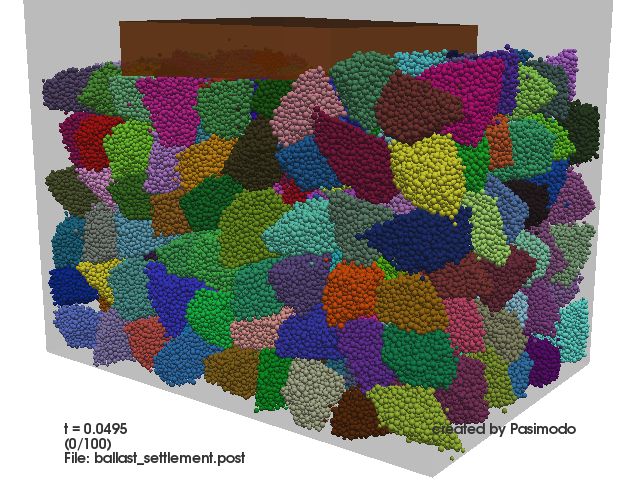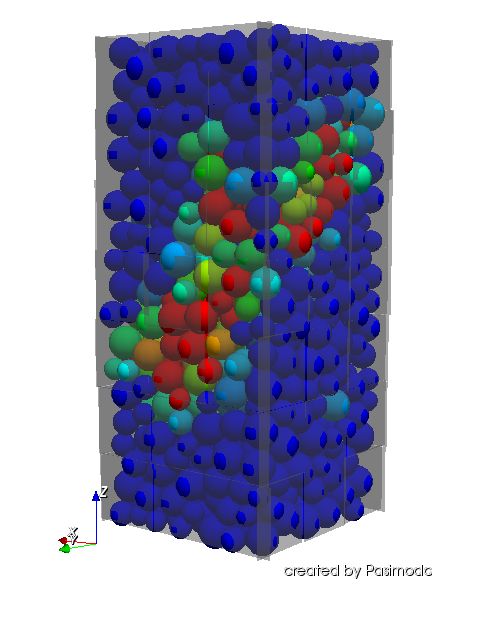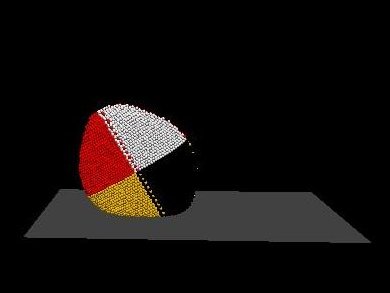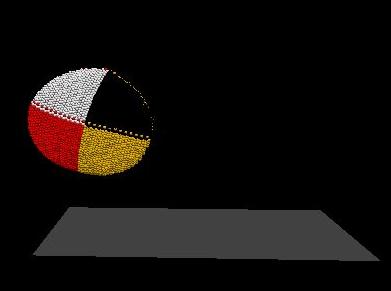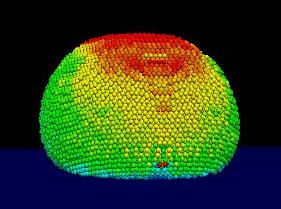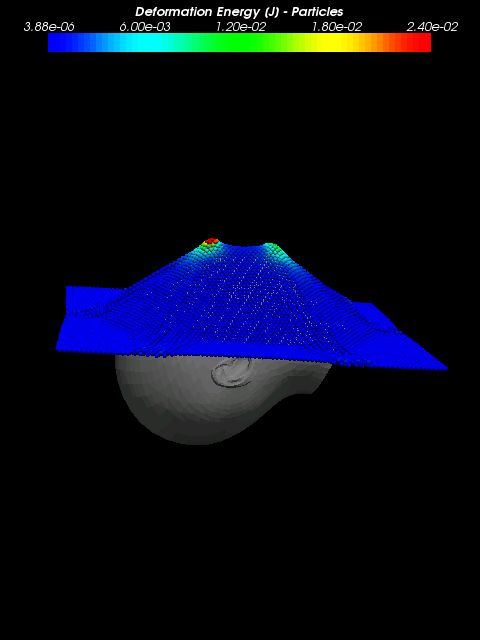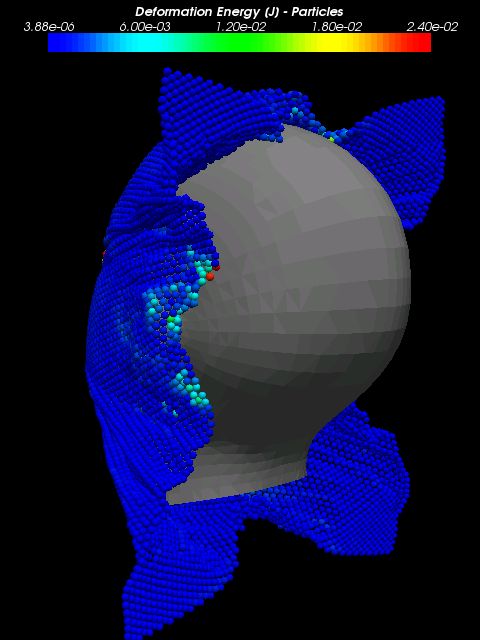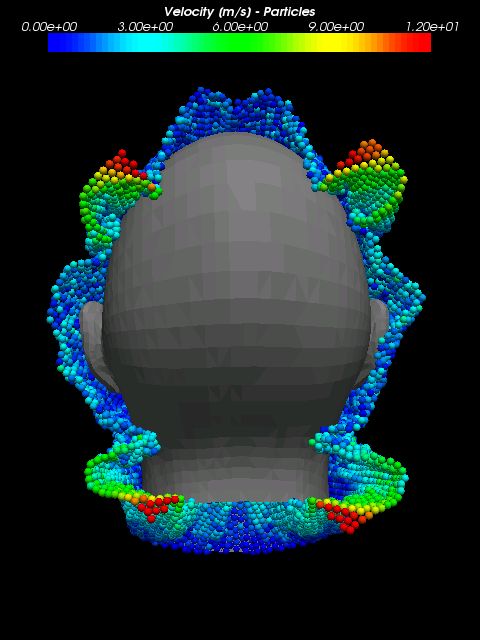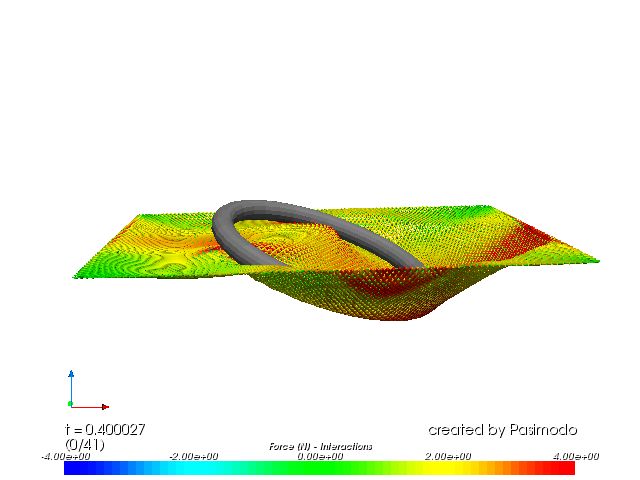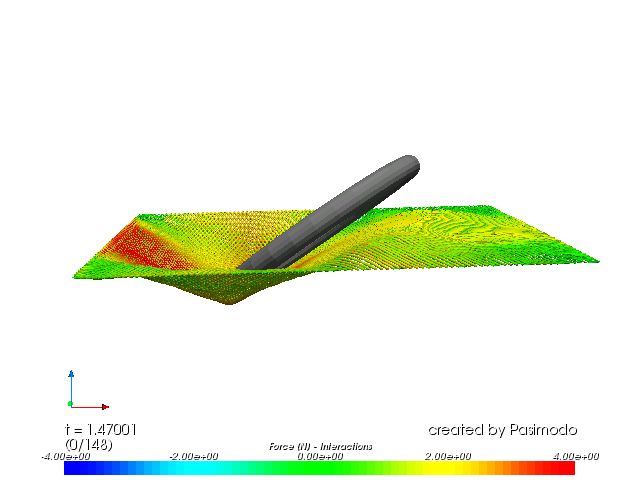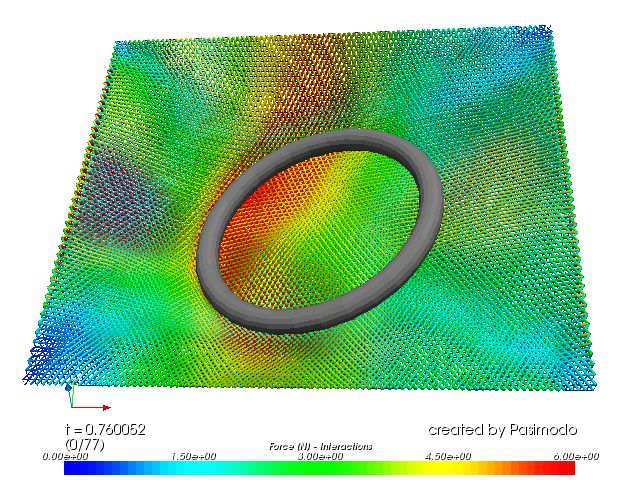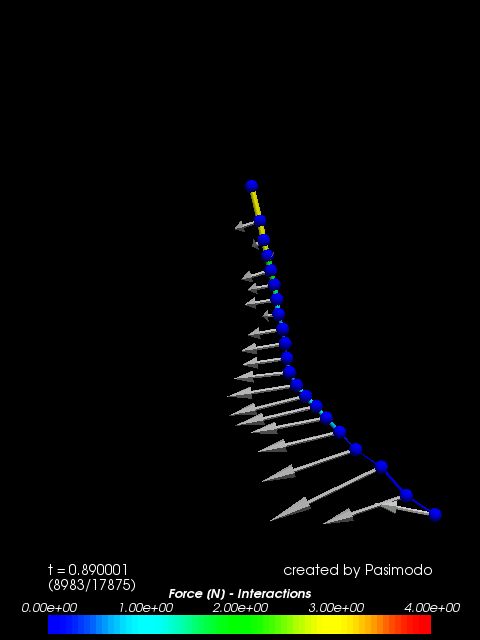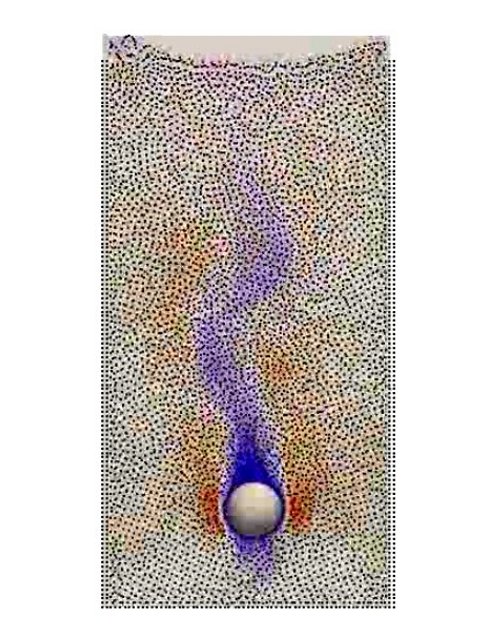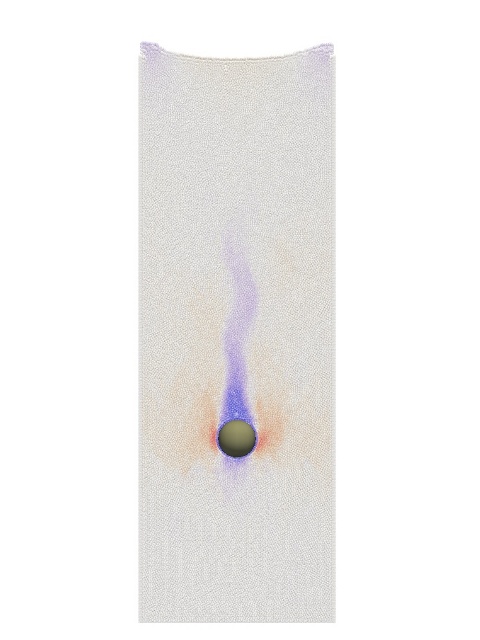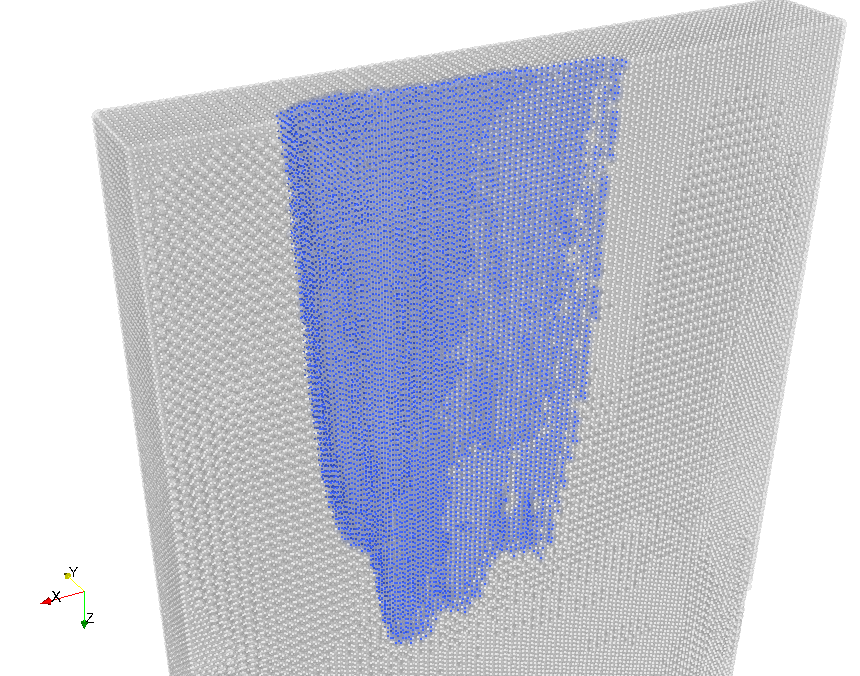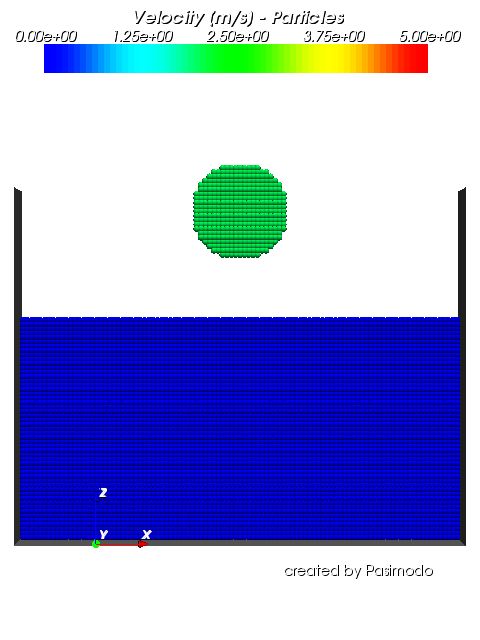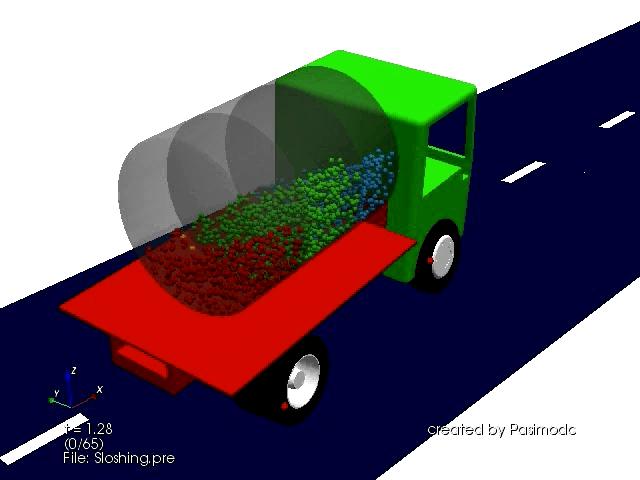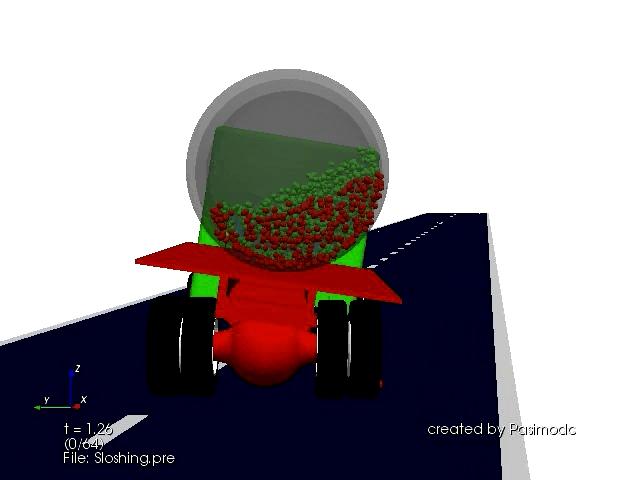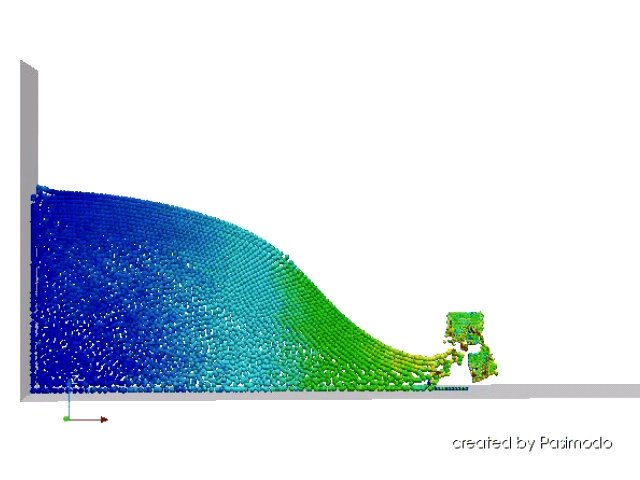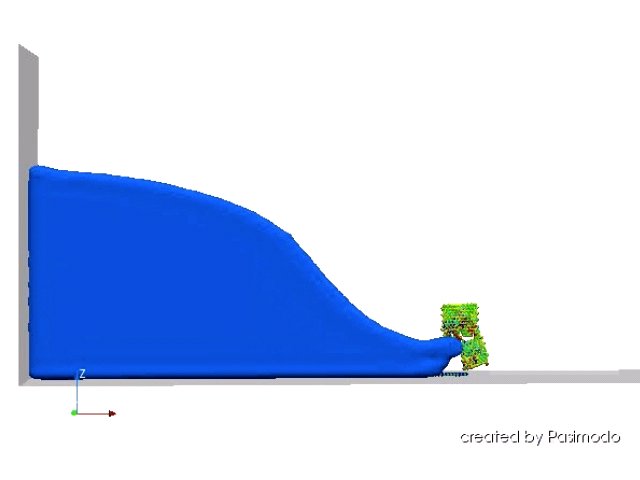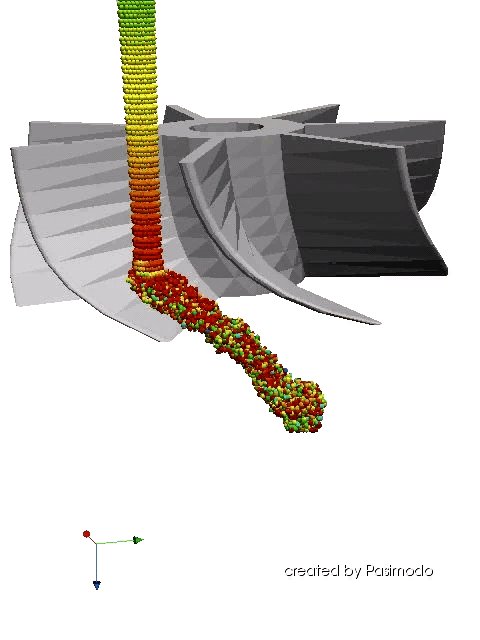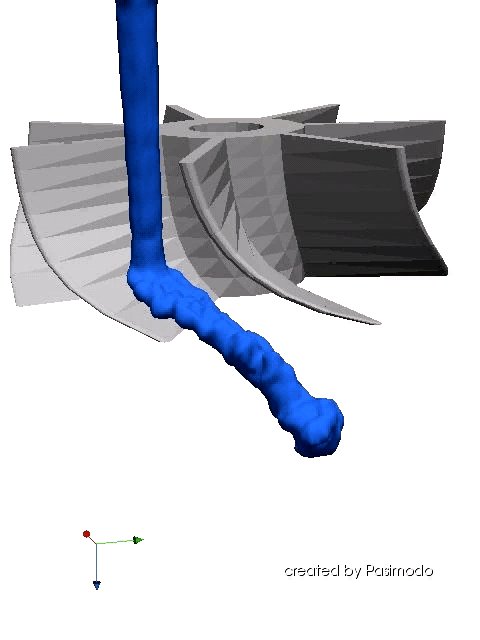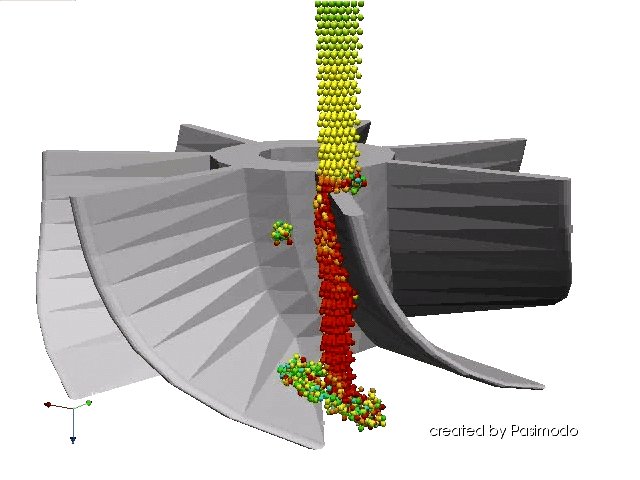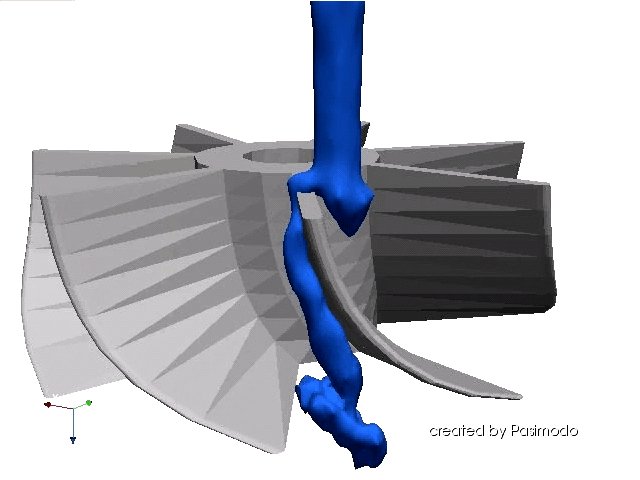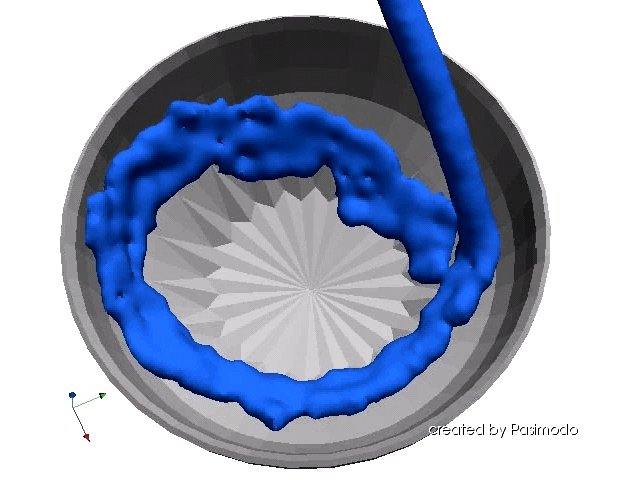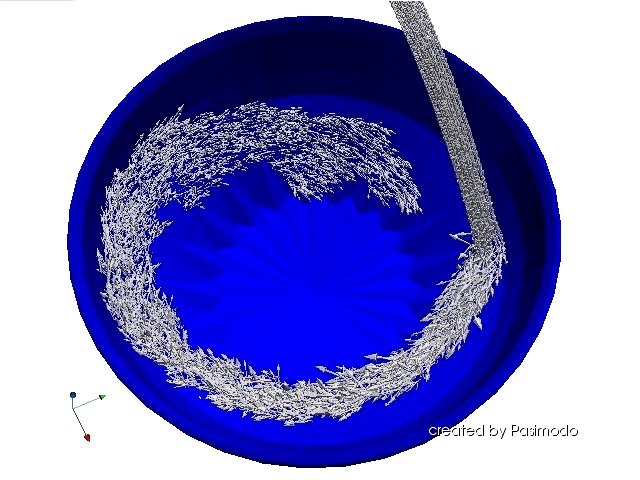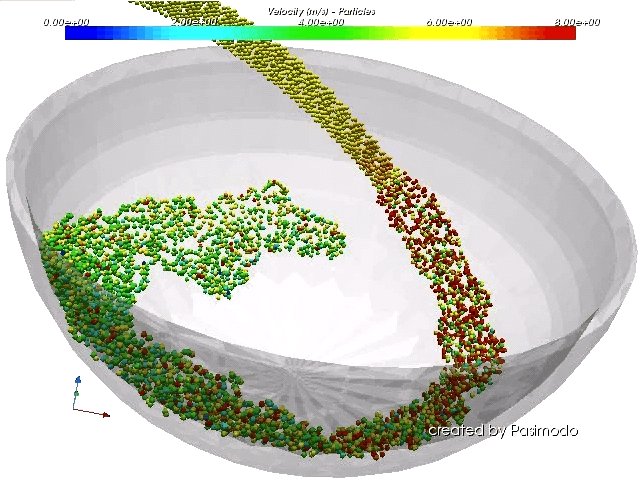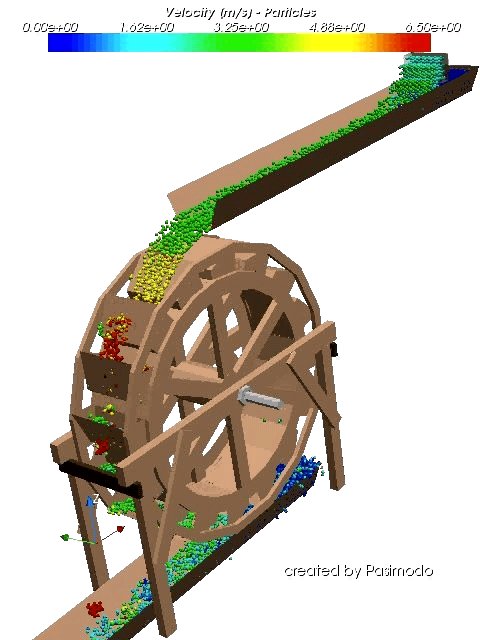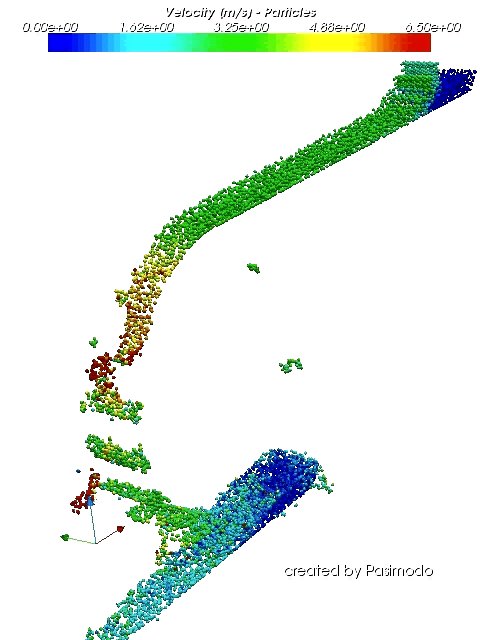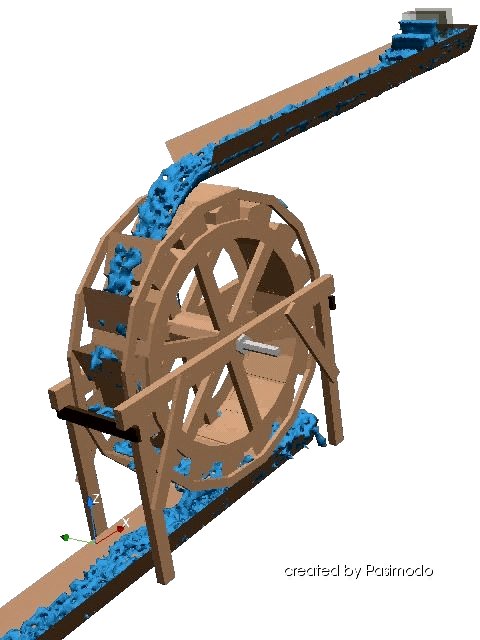 |
|
The following simulation examples were created with the particle simulation
software Pasimodo. For most of them Pasimodo was also used for post-processing
and visualization. Only a few videos were raytraced using Blender or visualized
using ParaView.
Read more about the software Pasimodo
-
Preliminary SPH-Simulation of the Cooling-Lubricant Supply for Deep-Hole Twist-Drills
(top: different dynamic viscosities and NCP-interaction test, bottom: viscous as water)
-
Developement and Implementation of the SPH-Plugin:
A. Mueller,
D. Schnabel and
C. Gnanasambandham,
Institute of Engineering and Computational Mechanics (ITM), University of Stuttgart
-
Simulation with
Pasimodo
and Visualisation with Paraview:
Dirk Schnabel,
Institute of Engineering and Computational Mechanics (ITM), University of Stuttgart
-
Cooperation with:
Dr.Ing Ekrem Oezkaya,
Institute for Machining Technology (ISF), TU Dortmund
Prof. Dr.Ing Dirk Biermann,
Institute for Machining Technology (ISF), TU Dortmund
-
SPH-Simulation of the Cooling-Lubricant Supply for Single-Lip Deep-Hole Drilling-Processes
(top: fast movies, bottom: slow movies)
-
Developement and Implementation of the SPH-Plugin:
A. Mueller,
D. Schnabel and
C. Gnanasambandham,
Institute of Engineering and Computational Mechanics (ITM), University of Stuttgart
-
Simulation with
Pasimodo
and Visualisation with Paraview:
Dirk Schnabel,
Institute of Engineering and Computational Mechanics (ITM), University of Stuttgart
-
Cooperation with:
Dr.Ing Ekrem Oezkaya,
Institute for Machining Technology (ISF), TU Dortmund
Prof. Dr.Ing Dirk Biermann,
Institute for Machining Technology (ISF), TU Dortmund
Discrete Element Method
Hybrid Discrete Element Method
-
Simulation of an orthogonal cutting process.
Model creation:
Timo
Gaugele,
in the framework of the
DFG Priority Program SPP 1180
-
Simulation of a tensile test with a highly elastic polysiloxane specimen.
Model creation:
Christian
Ergenzinger
-
Ballast made from bonded particles is subjected to different loadings:
1. Cyclic compression.
2. Oedometric compression. (Firstly, all particles are shown in the movie. Subsequently, only those particles are displayed, which are involved in fracture processes.)
3. A sleeper is pressed into a ballast bed.
Model creation:
Christian
Ergenzinger in the framework of the
DFG SFB 716
-
Simulation of a multiaxial copression test with a rock specimem (breakage color
coded).
Model creation:
Celine Geiger (student research project),
Christian
Ergenzinger
-
Oblique rebound of an elastic sphere from a rigid plane.
Model creation:
Florian Fleißner
-
Simulation of a nearly limp membrane falling on an obstacle.
Model creation:
Florian Fleißner
-
Torus falling on a membrane. The membrane consists of bonded spherical particles. Only
the bonds are displayed and color coded with respect to the tensile force in
the bonds.
Model creation:
Florian Fleißner
-
Simulation of a plastic string dangling under gravity.
Model creation:
Timo Gaugele
-
Simulation of wattling with five threads, modelled as beaded spherical
particles. The spheres are bonded by linear-elastic force elements.
Model creation:
Florian Fleißner
Smoothed Particle Hydrodynamics
-
Simulation of a rigid sphere falling in a liquid tank.
Model creation and simulation:
David Vetsch (Laboratory of
Hydraulics Hydrology and Glaciology of Swiss Federal Insitute of Technology
Zurich)
-
Simulation of a filling process.
The video shows the outpouring of water from a nozzle into a stand-up pouch.
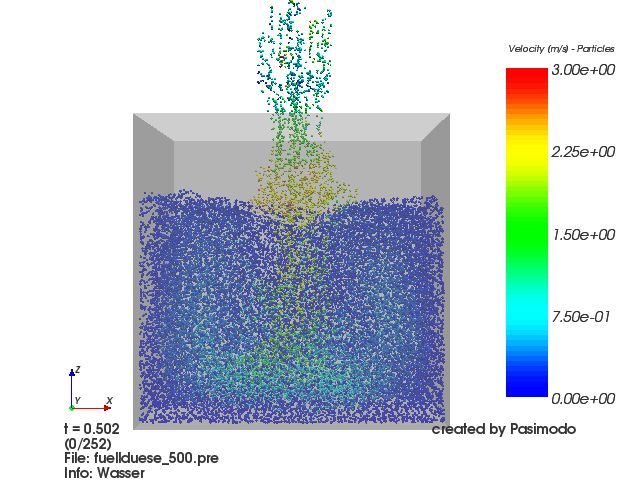
Model creation:
Alexandra
Müller
-
Simulation of a freezing process.
The temperature of the particles on the upper border as well as those in the center is fixed over time.
Frozen particles are shown larger than liquid ones.
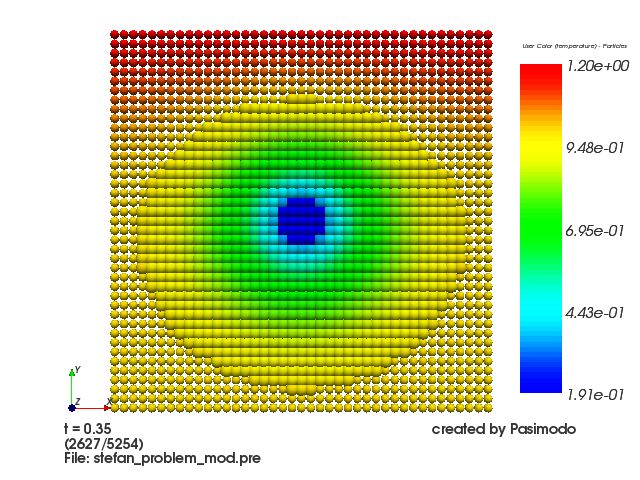
Model creation:
Alexandra
Müller
-
Simulation of a laser welding process of aluminum.
The workpiece is located on an inclined plane and the initial temperature is 20 °C.
During the simulation, a weld pool is formed and the molten material flows downward.
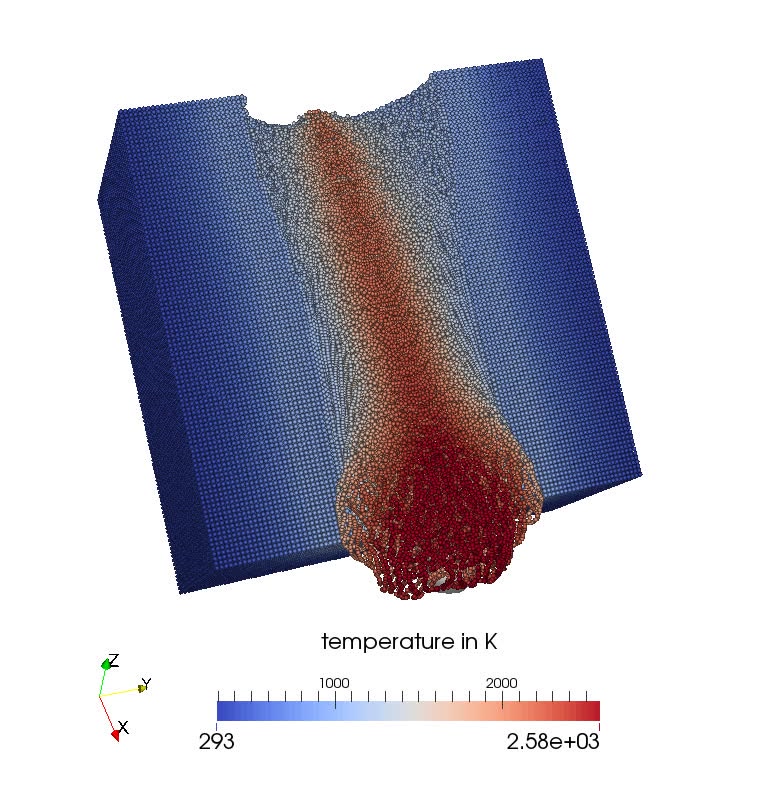
Model creation:
Haoyue Hu
-
Simulation of a phase transition during laser welding of aluminum.
The blue solid particles behave thermoelastically, whereas the red fluid particles follow the Navier-Stokes equations and form the weld pool.
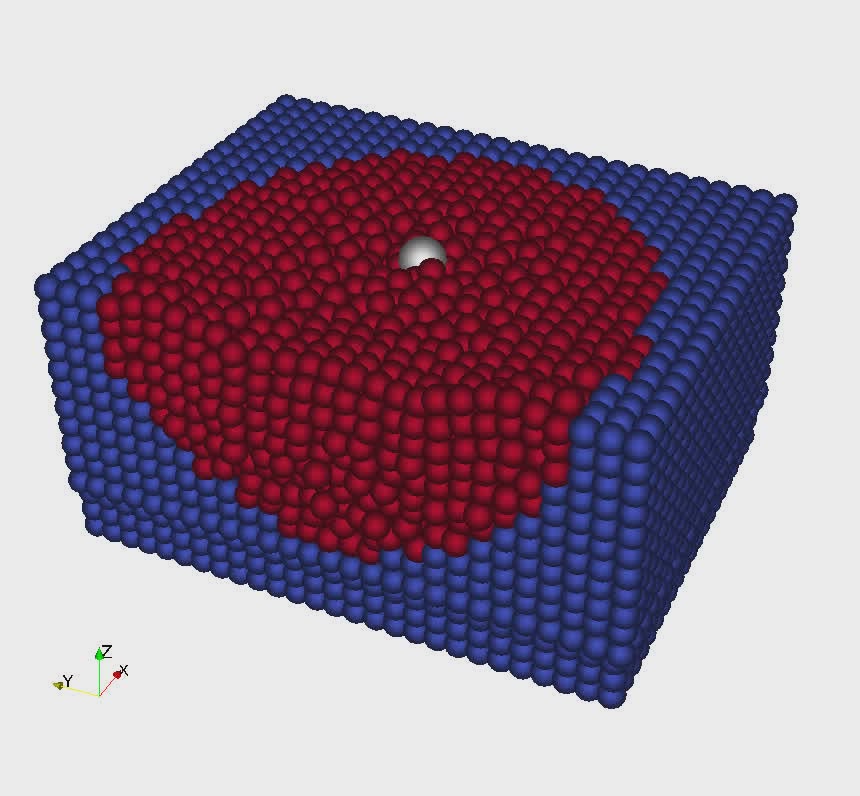
Model creation:
Haoyue Hu
-
Simulation of deep penetration laser welding of aluminum.
The grey particles form the solid material, the blue particles form the liquid weld pool, and the light grey particles show the resolidified material.
Evaporation is considered through recoil pressure on the liquid melt, the gas phase is currently not modeled.
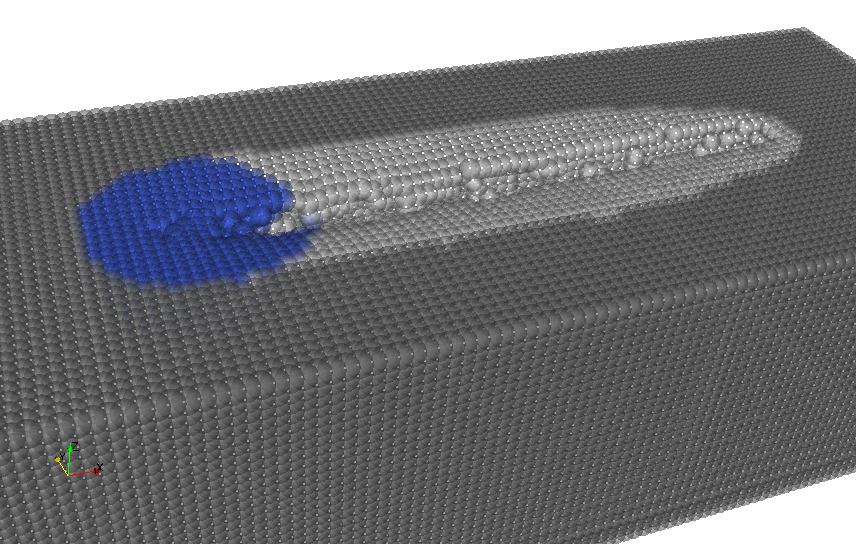
Model creation:
Haoyue Hu
-
Simulation of deep penetration laser welding of ice.
On the left, the light grey particles form the solid ice block and the blue particles form the liquid weld pool (water).
Evaporation is considered through recoil pressure on the liquid melt, the gas phase is currently not modeled.
On the right, the absorbed intensities (max: red, min: blue) from the laser beam at the capillary front are visualized using a ray-tracing scheme developed at the IFSW.
Model creation:
Haoyue Hu
-
Simulation of two immiscible fluids with different densities in a breaking dam scenario.

Model creation:
Weiran Lin (student research project), Haoyue Hu
-
A Rayleigh-Taylor instability occurs at the interface between two fluids of different densities when the fluids are accelerated against each other.
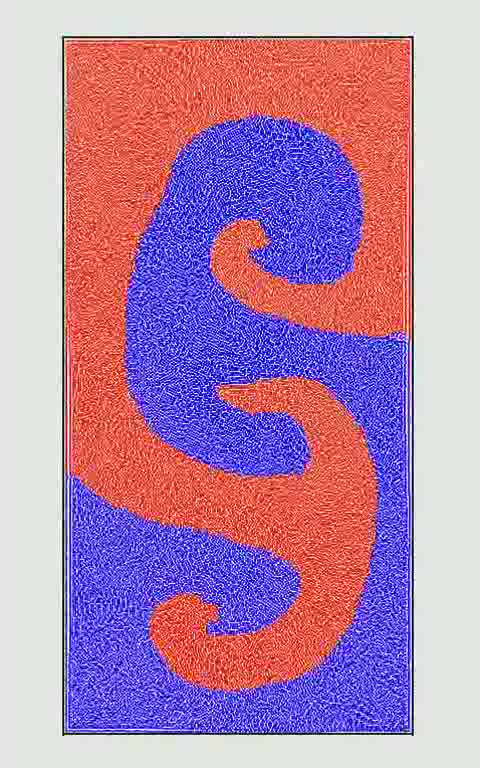
Model creation:
Weiran Lin (student research project), Haoyue Hu
-
Simulations involving elastic materials including tensile failure.
The particles are coloured according to either damage from 0 (undamaged) to 1 (completely damaged) or von Mises tension.
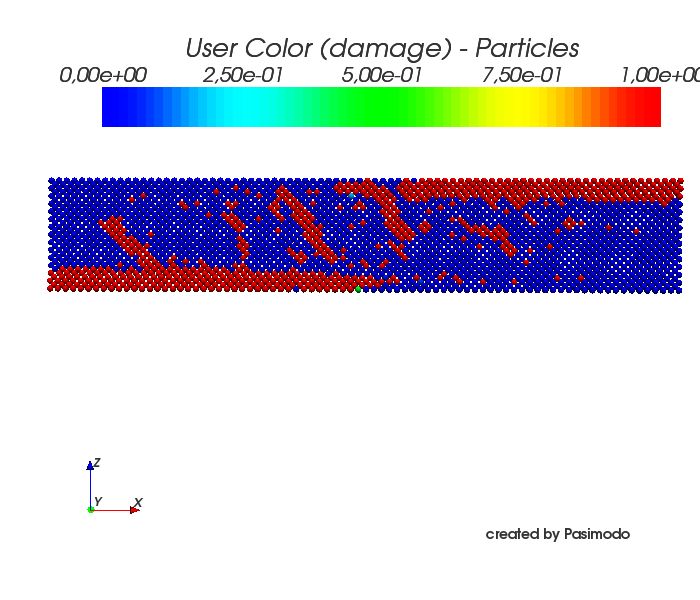
|
|
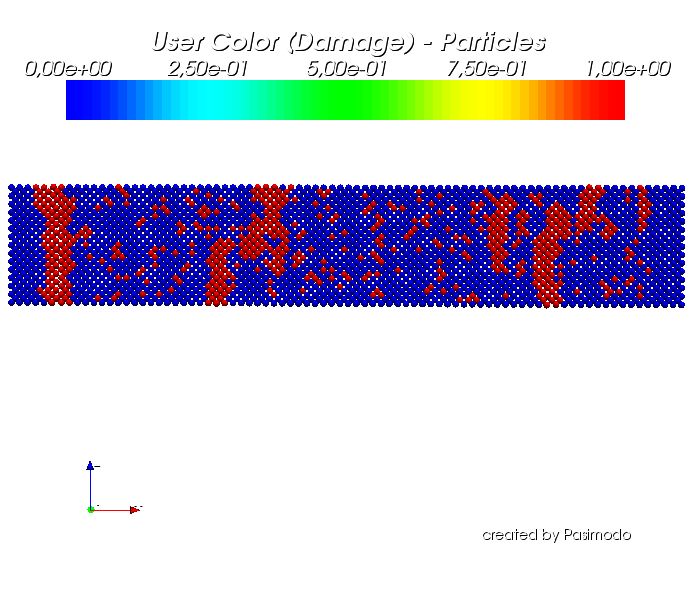
|
|
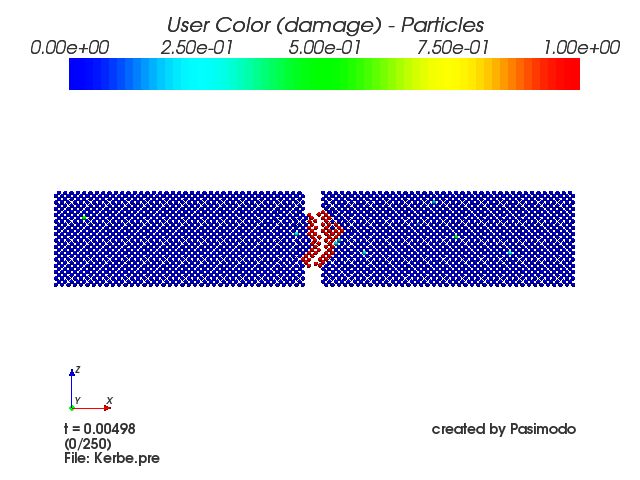
|
|
Shear test of basalt. The material on the upper border is pushed to the right.
|
|
Tensile test of basalt. The last columns of particles on the right are pulled towards outwards.
|
|
Tensile test of basalt with notches.
|
|
|
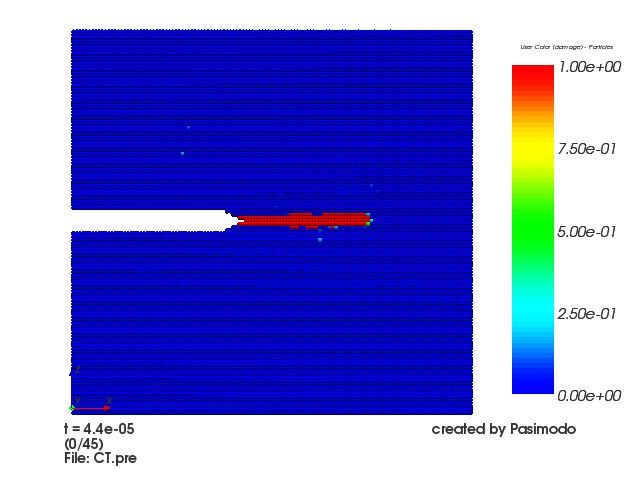
|
|
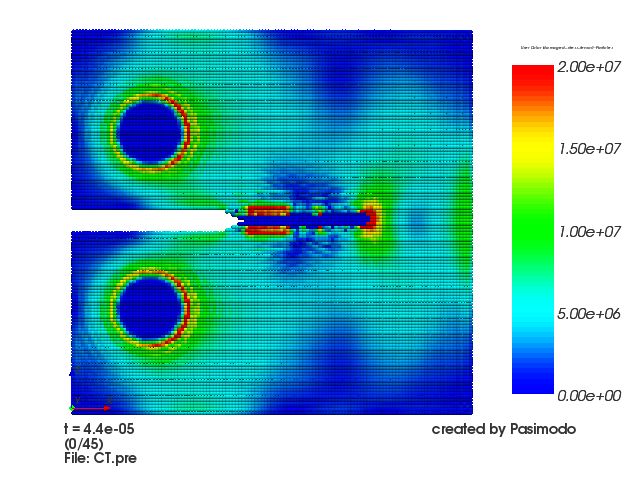
|
|

|
Compact tension test (CT test, DIN EN ISO 12737) aluminium.
A notched sample is pulled asunder above and below the notch.
|
|
|
Model creation:
Thomas Erk (student research project),
Alexandra
Müller
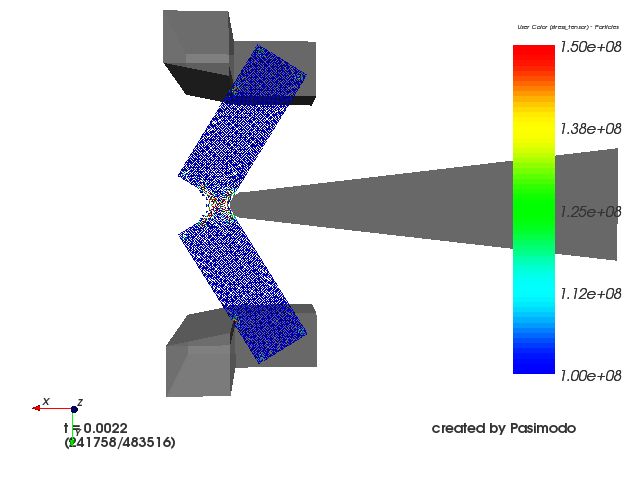
Charpy impact test (DIN 10045) used to characterize the behavior of material AlMg3 under impact loading.
The rigid body model of the hammer deforms the notched specimen and is slowed down.
Model creation:
Fabian
Spreng
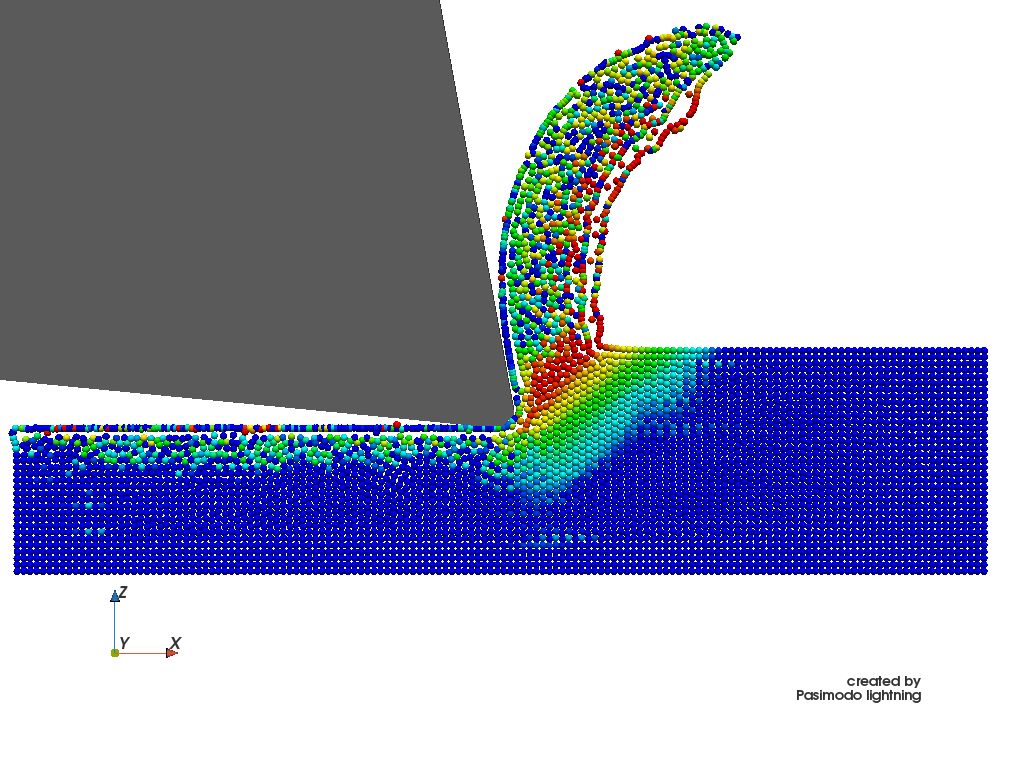
SPH simulation of an orthogonal cutting process for the heat-treated steel C45E with a cutting speed of 1.6 m/s (blue = low von Mises equivalent stress; red = high von Mises equivalent stress).
Model creation:
Fabian
Spreng
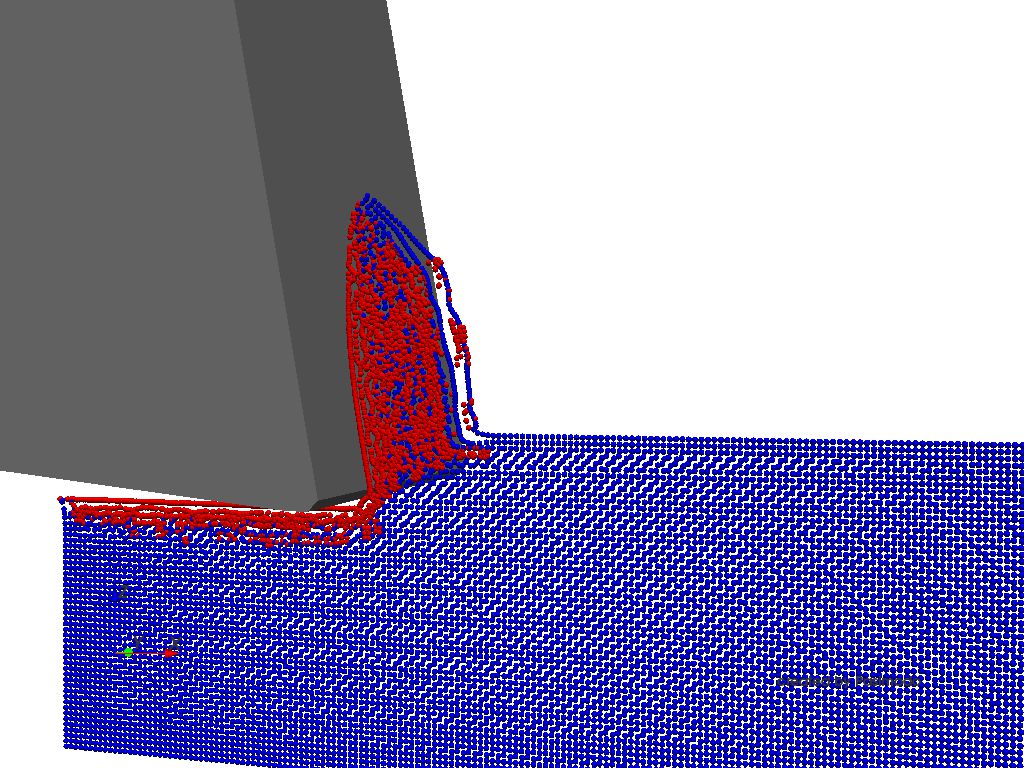
Adaptive SPH simulation of an orthogonal cutting process for the aluminium alloy AlMg3 with a cutting speed of 1.6 m/s (blue = original particles; red = refined particles).
Model creation:
Fabian
Spreng
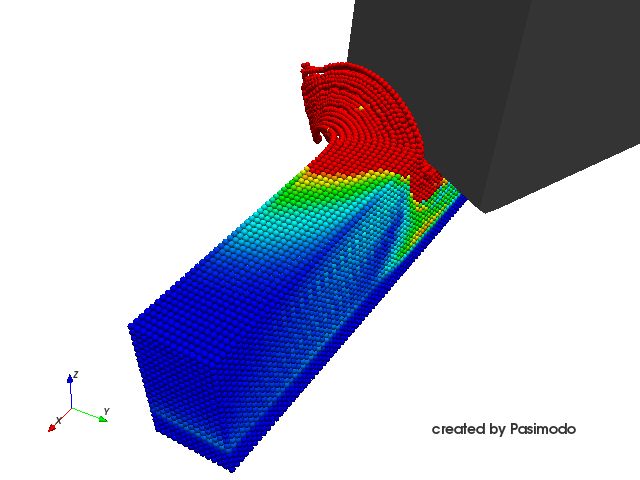
Three-dimensional SPH simulation of a cutting process for the heat-treated steel C45E with a cutting speed of 1.6 m/s (blue = low von Mises equivalent stress; red = high von Mises equivalent stress).
Model creation:
Fabian
Spreng
-
Simulations involving elastic materials.
The particles are coloured according to von Mises tension.
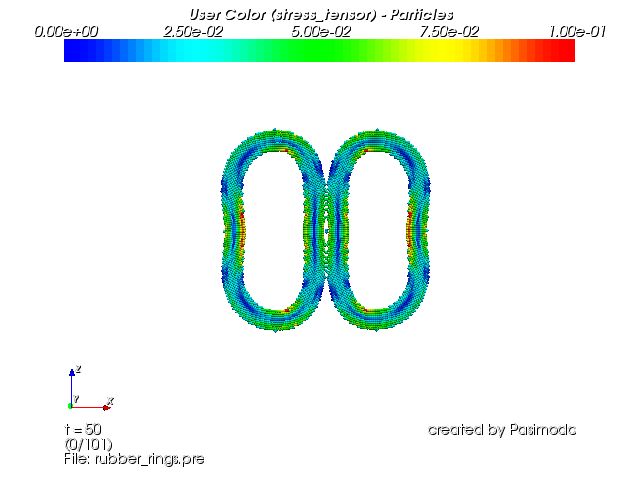
|
|
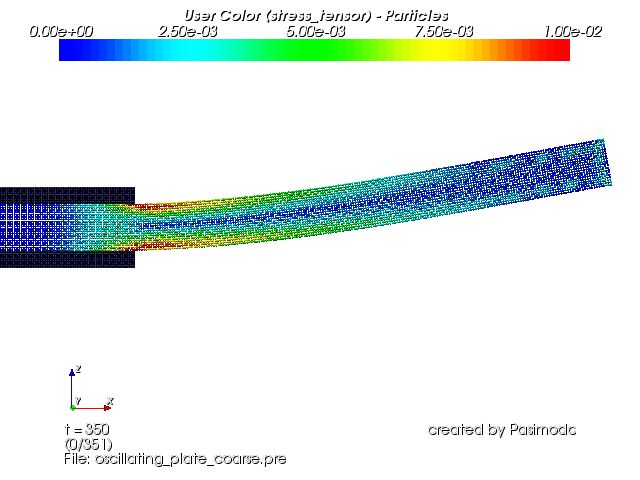
|
|
Collision of elastic rings.
|
|
Oscillating plate. The plate is fixed on the left end and is deflected on the right side by an imposed velocity.
|
Model creation:
Alexandra
Müller
-
Simulation of sloshing liquids dependent on the viscosity.
Model creation:
Alexandra
Müller
-
Adaptive SPH simulation of a breaking dam with two obstacles (blue = original particles; red = refined particles).
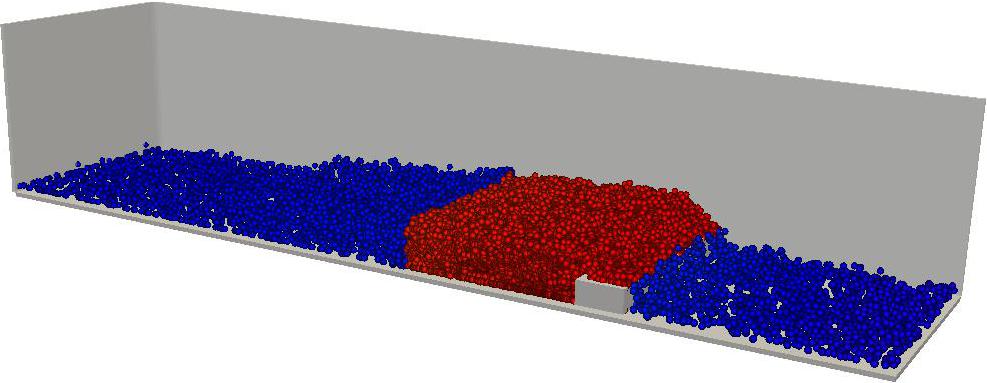
Implementation SPH-plugin and plugin for adaptive refinement/coarsening:
Alexandra
Müller
Model creation and simulation:
Dirk Schnabel,
Fabian Spreng
-
Simulation of sloshing liquids in tank trucks.
Model creation:
Alexandra
Müller,
Florian Fleißner
-
Smoothed Particle Hydrodynamics simulations, some of them coupled with Discrete
Element simulations.
Model creation:
Alexandra
Müller (diploma thesis),
Florian Fleißner
Links
Information about the particle
simulation software Pasimodo.
Contact
|
|
